Orange is a bright and cheerful color that you can find all around you in nature. It’s the color of sunsets, juicy fruits, and even some amazing animals. In this blog post, we’re going to take a closer look at 50 things in nature that are orange. From the delicious taste of peaches to the rare sight of a cave salamander, orange adds a splash of fun and excitement to the world around us.
Each orange thing we talk about is special in its own way. Some are easy to find in your backyard, while others are hidden treasures waiting to be discovered in special places. Whether it’s a fruit, a flower, or a fascinating creature, every orange item has its own story. Get ready to be surprised and learn something new about the color orange in nature.
1. Albino African House Snake
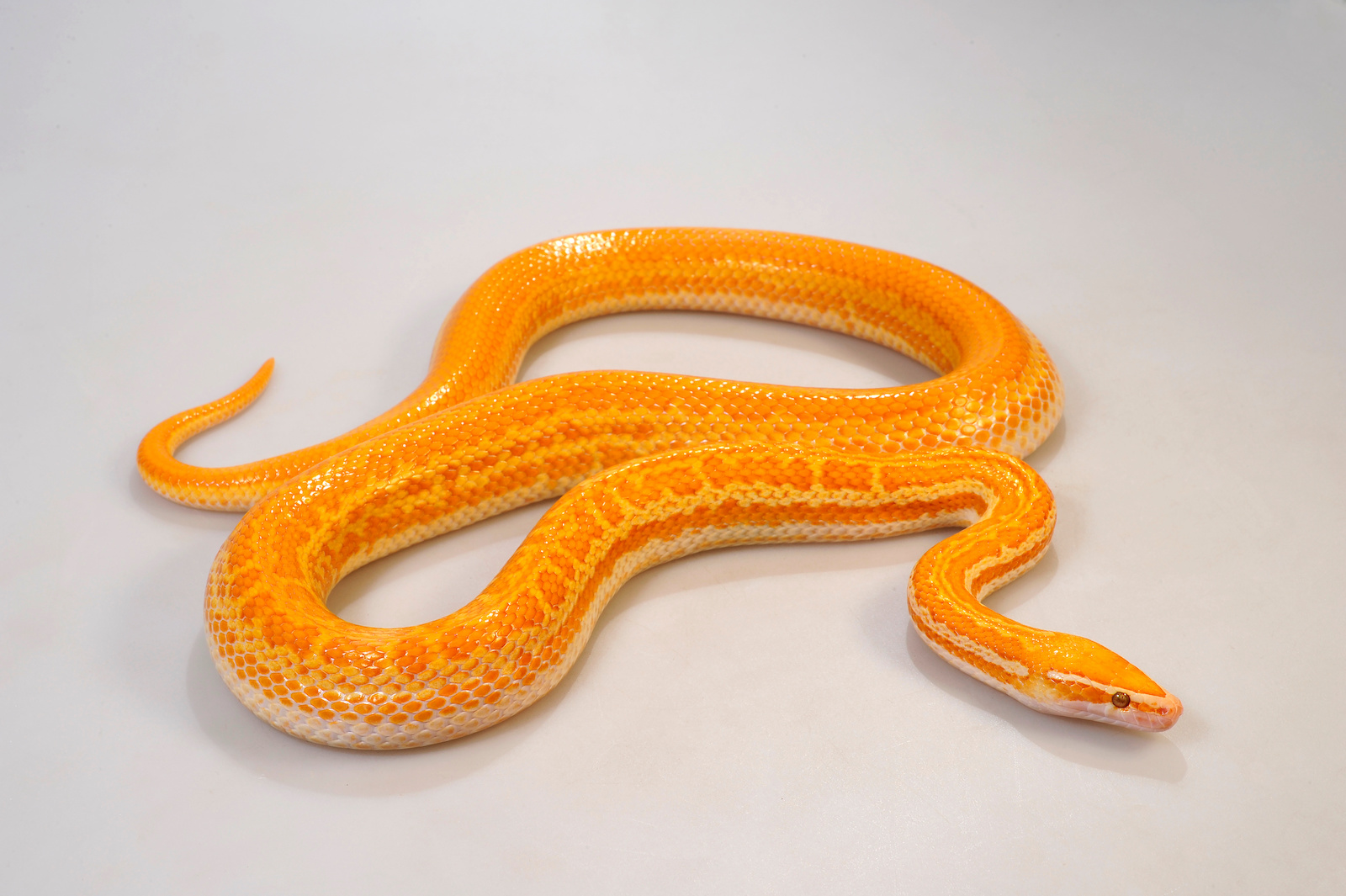
The Albino African House Snake is a special kind of snake with a bright orange or yellow color and red or pink eyes because it’s albino. They come from sub-Saharan Africa and are easy to take care of, making them popular pets. These snakes are not too big, growing to about 24 to 47 inches long. They need a place to live that doesn’t have too much light because their albinism makes their eyes sensitive.
2. Aloe Blooms
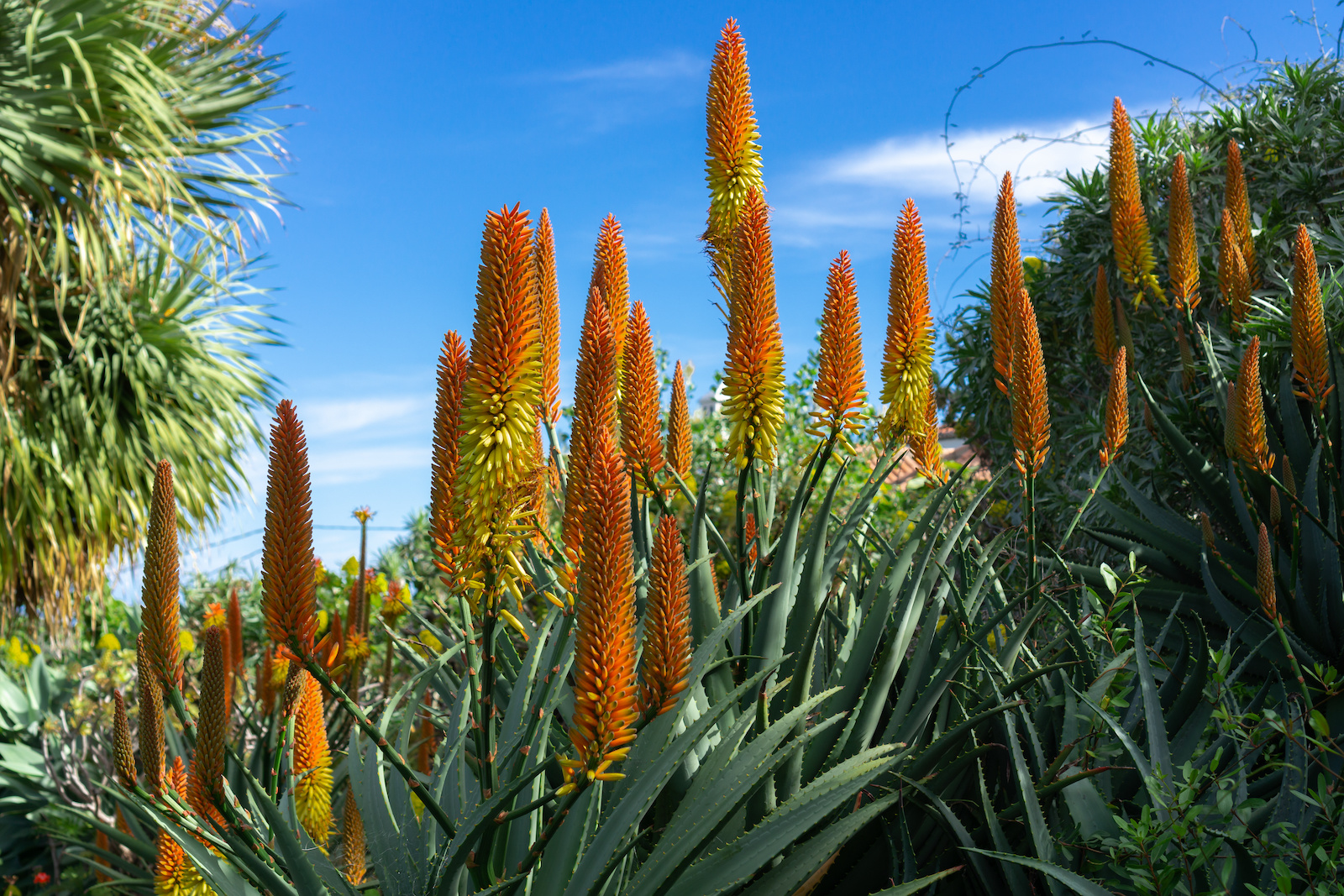
Aloe blooms are striking flowers that grow from the aloe plant, known for their vibrant orange, yellow, or red colors. They stand out on tall stalks above the plant’s thick, green leaves, usually blooming in late winter or early spring. These blooms are not only beautiful but also attract various pollinators like bees and hummingbirds, helping the garden ecosystem.
3. Broad Headed Skink
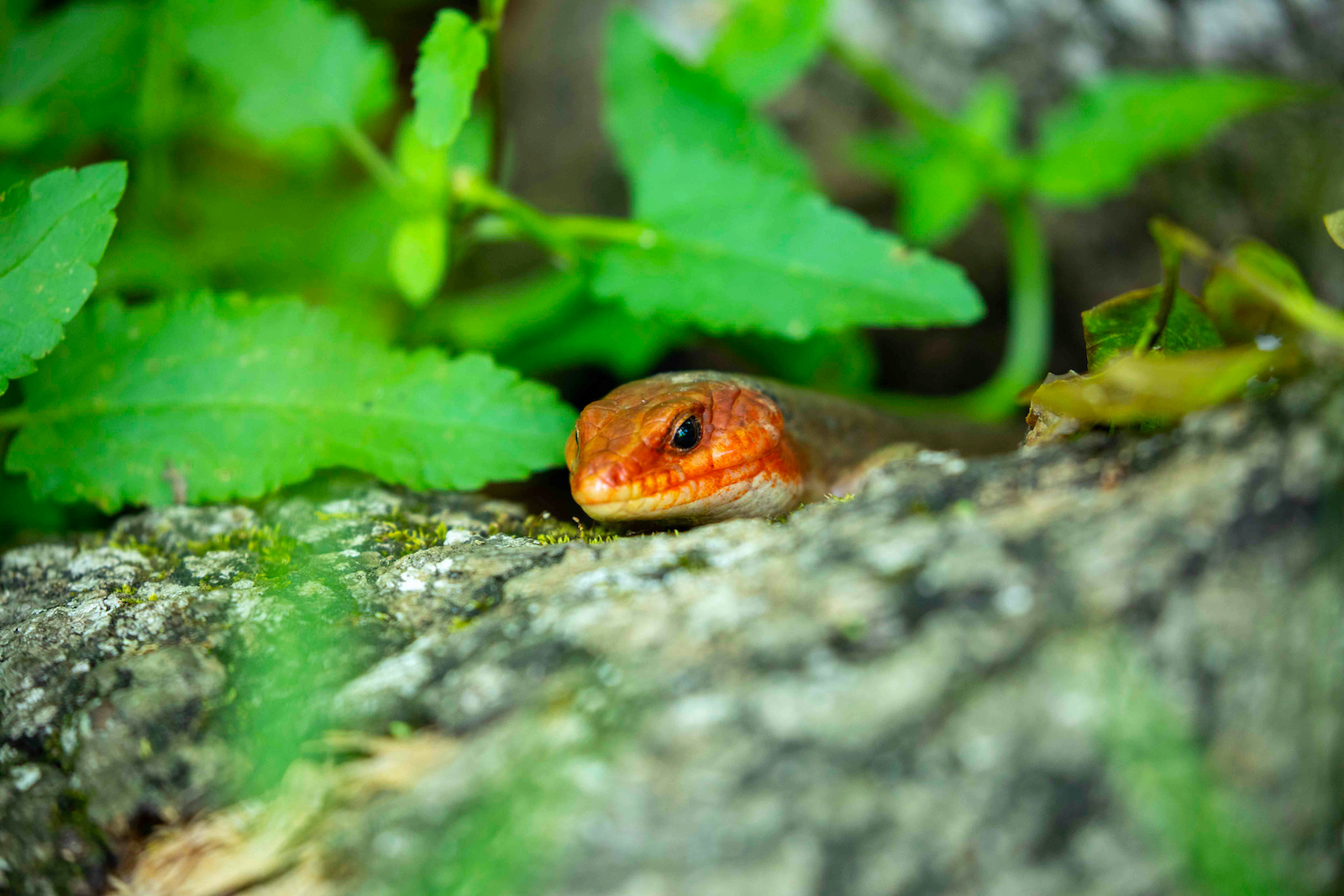
The Broad-headed Skink is a big lizard from the southeastern US, famous for the males’ bright orange heads during the breeding season. They can grow up to 13 inches long and like to climb trees in wooded areas. Young skinks have bright blue tails to scare off enemies, but as they grow, their colors change to help them hide better in the forest.
4. Clown Nudibranch
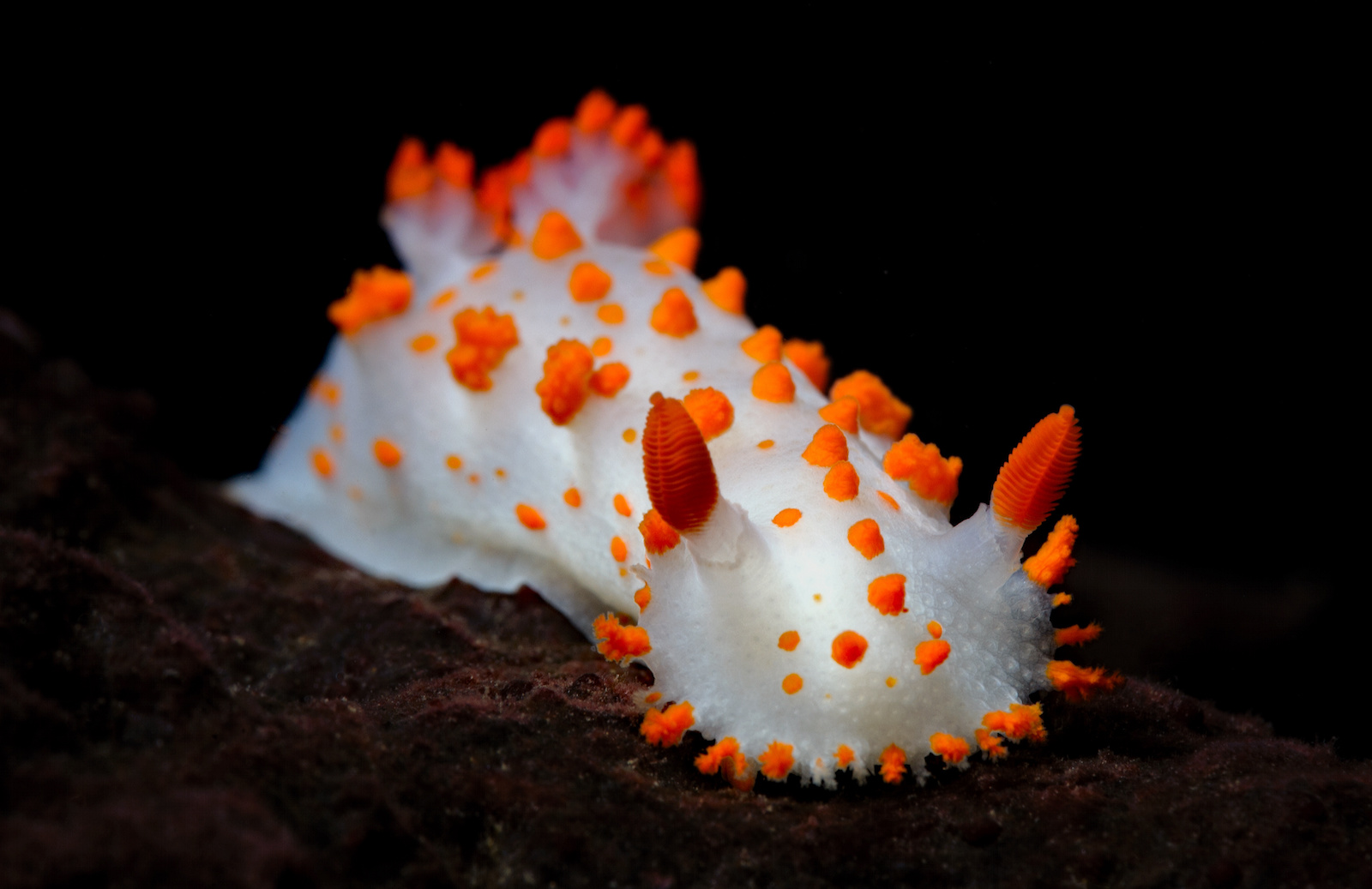
The Clown Nudibranch is a colorful sea slug found in the Indo-Pacific area, especially near Australia and New Zealand. It has a bright orange body with purple and white spots. It eats sponges and uses the sponges’ toxins for protection. A cool feature is the feathery gill on its back, which helps it breathe and adds to its unique look.
5. Clownfish
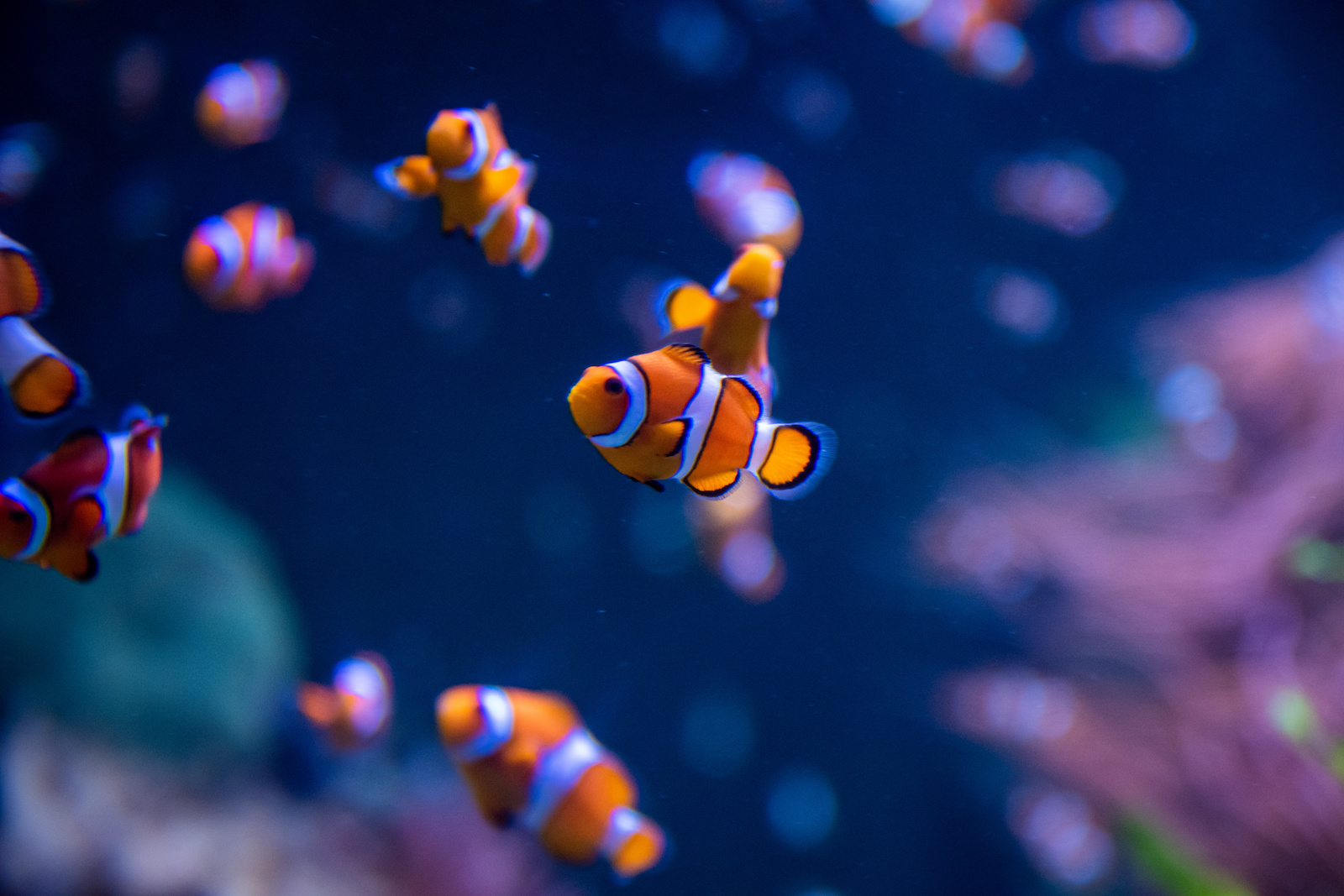
Clownfish are bright orange fish with white stripes, living in warm ocean waters near sea anemones. They can live safely among the anemones’ stings and help keep them clean and safe from predators. A cool fact about clownfish is that they can change from male to female if the leading female dies, making sure there’s always a pair to have babies.
6. Carrots
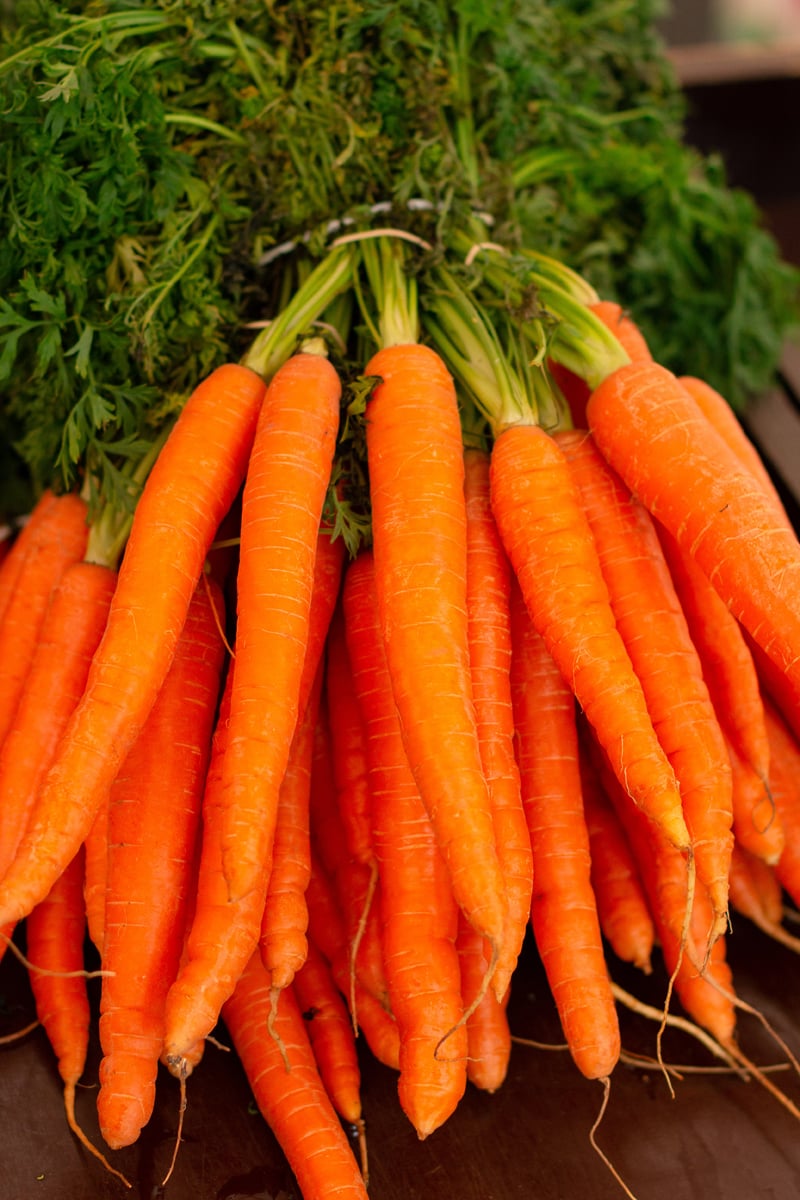
Carrots are a popular vegetable known for their bright orange color, although they can also be found in purple, red, white, and yellow varieties. Originally from Persia, carrots were first cultivated for their aromatic leaves and seeds, not their roots. Besides their appealing color and crunch, carrots are rich in beta-carotene, a nutrient that the body converts into vitamin A, essential for good vision, skin health, and immune function.
7. Canna Lily Flower
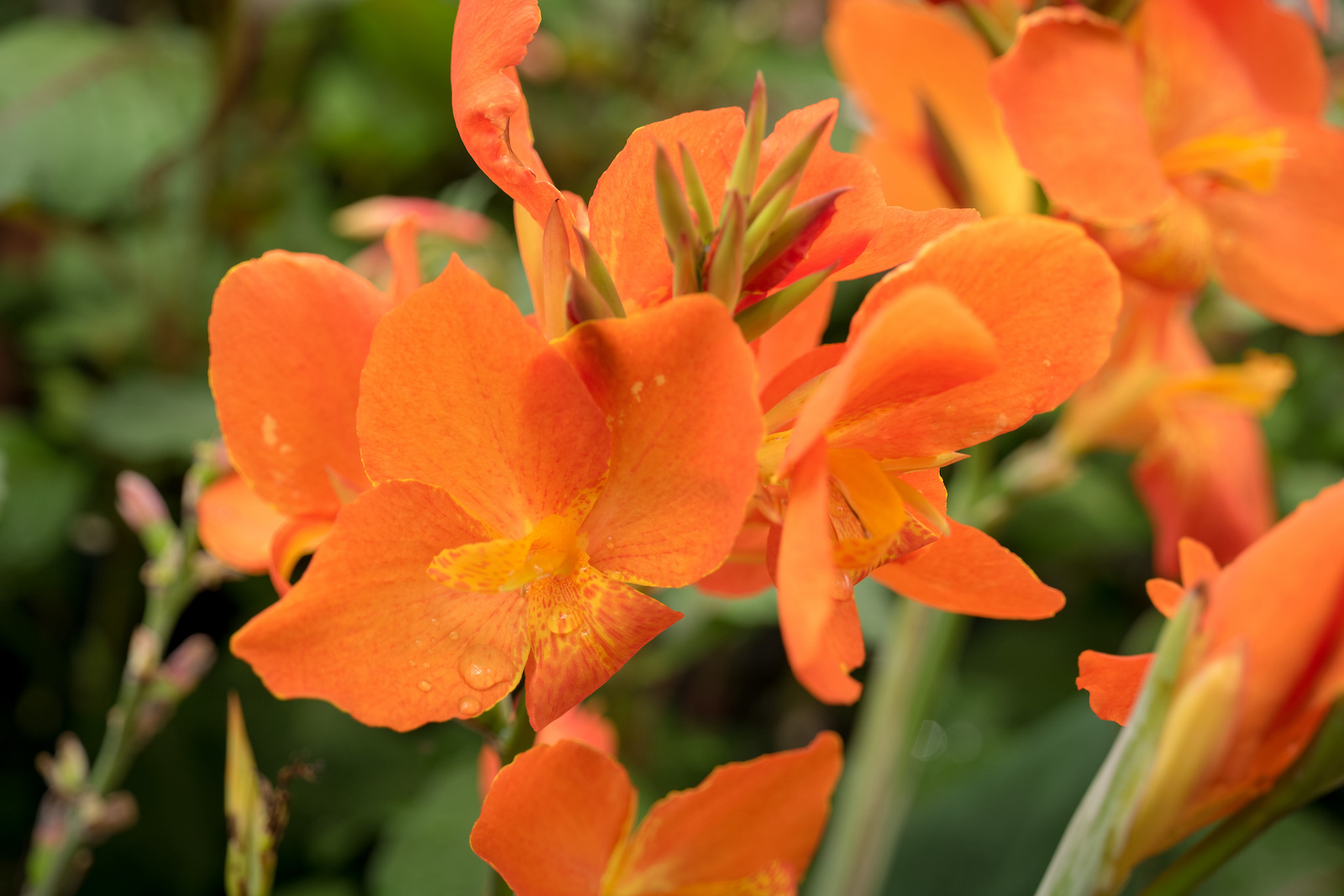
Canna Lily Flowers are bright and big, coming in orange and other colors like red and yellow. They’re not real lilies but attract hummingbirds and butterflies, making gardens lively. They come from warm places and can be used in cooking or as food wraps. Easy to grow, they like sunny spots and wet soil, perfect for adding a tropical look to gardens.
8. Orange Cordyceps
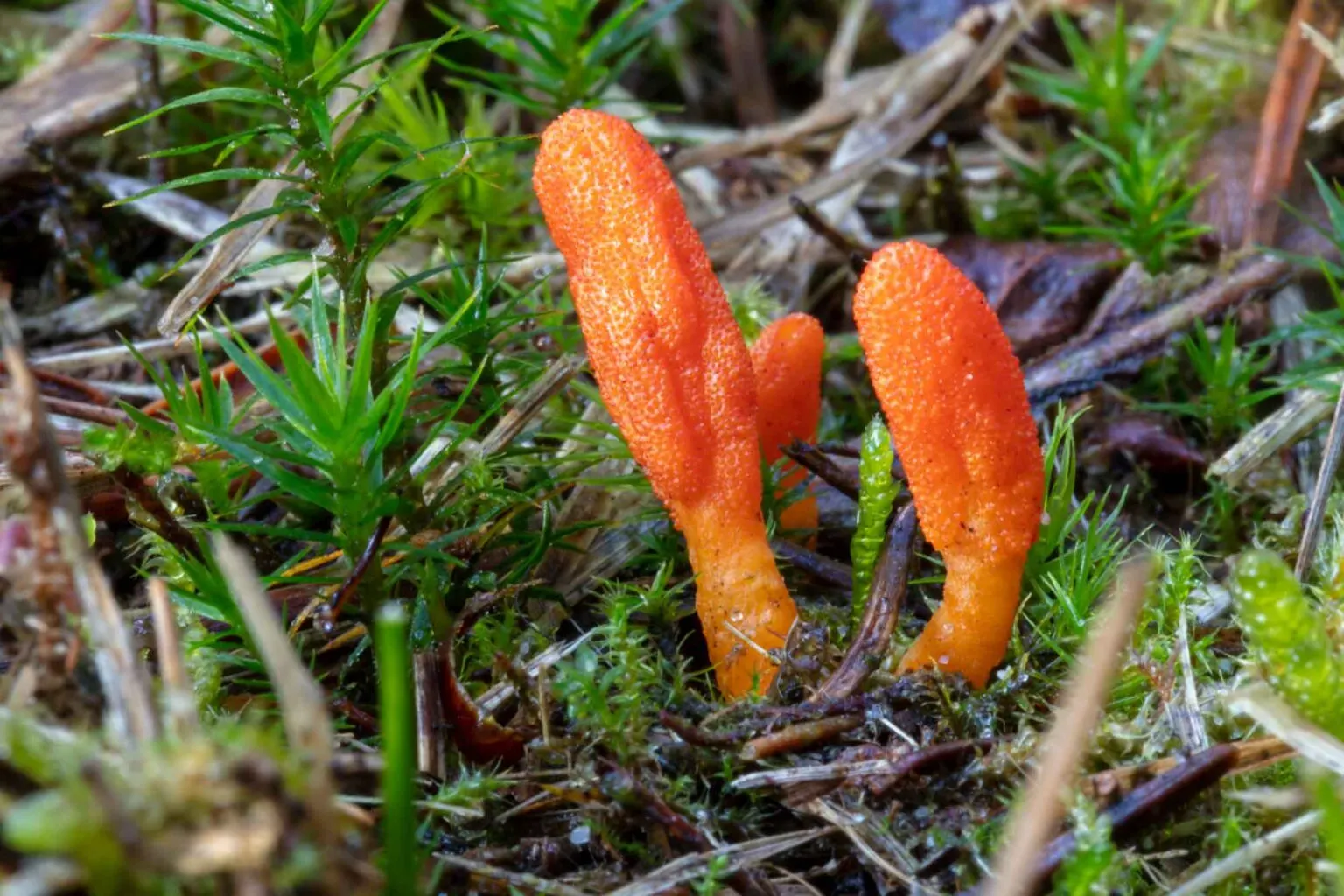
Orange Cordyceps is a bright orange fungus that grows on insects. It turns these insects into its home to spread. This unique fungus is not just odd in behavior but also sought after for its health benefits.
9. Orange Cup Corals
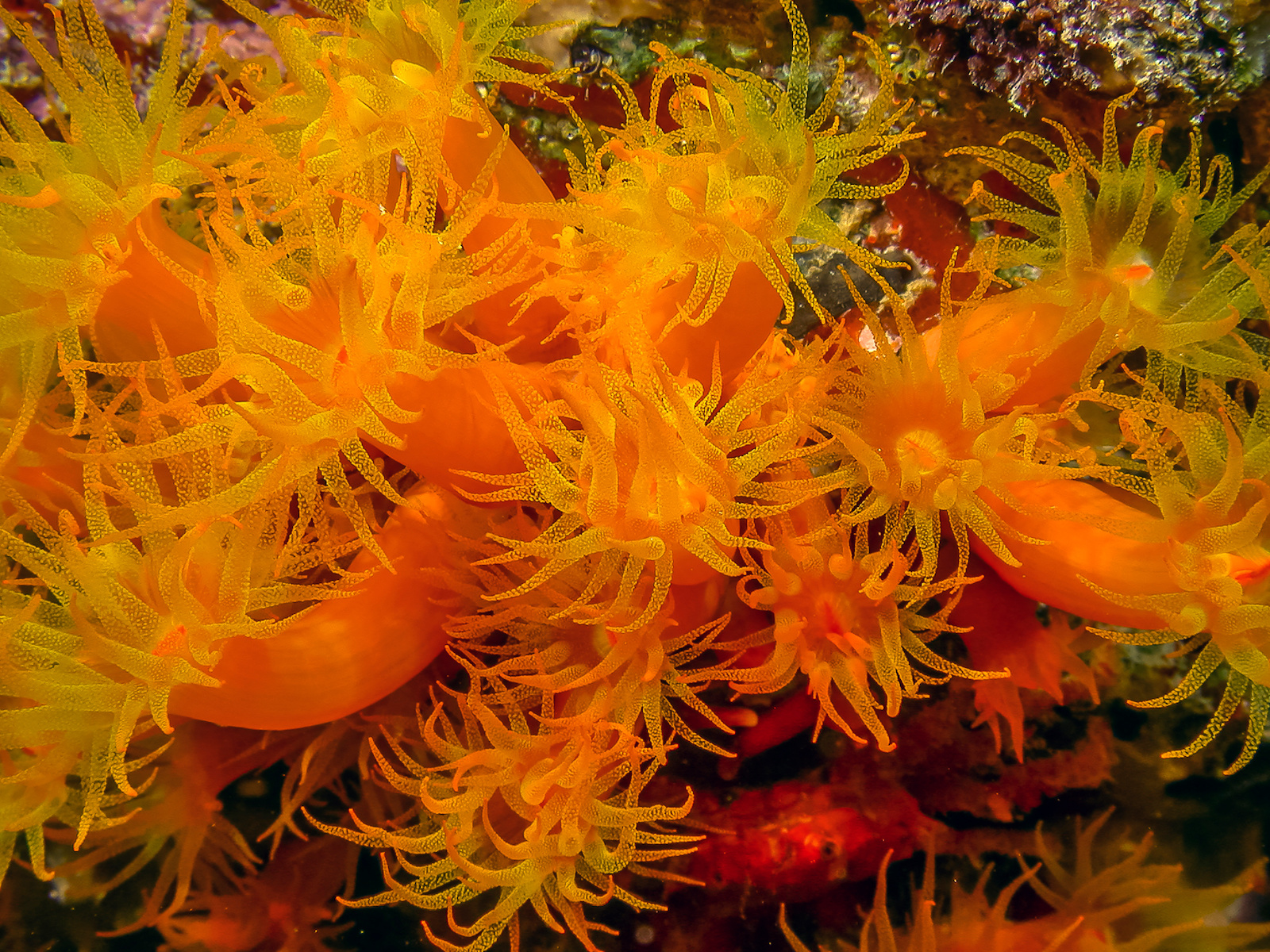
Orange Cup Corals are bright orange corals that live in shallow and deep water, often under ledges or in caves where it’s dark. Unlike other corals, they don’t need sunlight to grow; they catch tiny food particles from the water. They can spread fast, making them beautiful but sometimes too invasive in places they’re not originally from.
10. Dahlia Flower
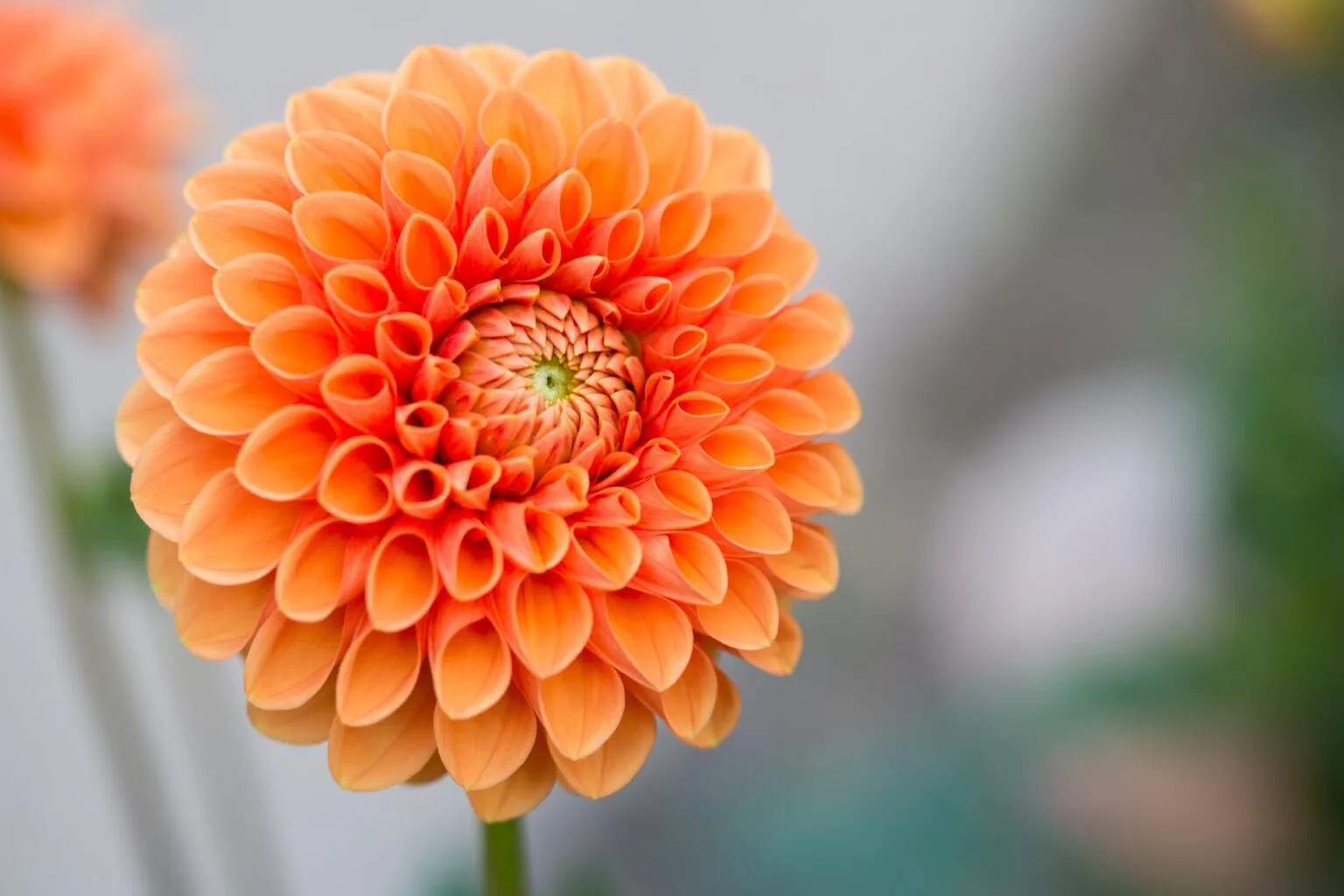
The Dahlia Flower is renowned for its stunning beauty and diversity, featuring a wide range of colors, including vibrant orange, as well as sizes and shapes. Originating from Mexico, dahlias are highly valued for their long blooming season, often from summer through to the first frosts of autumn. These flowers have become symbols of elegance and dignity.
11. European Firebug
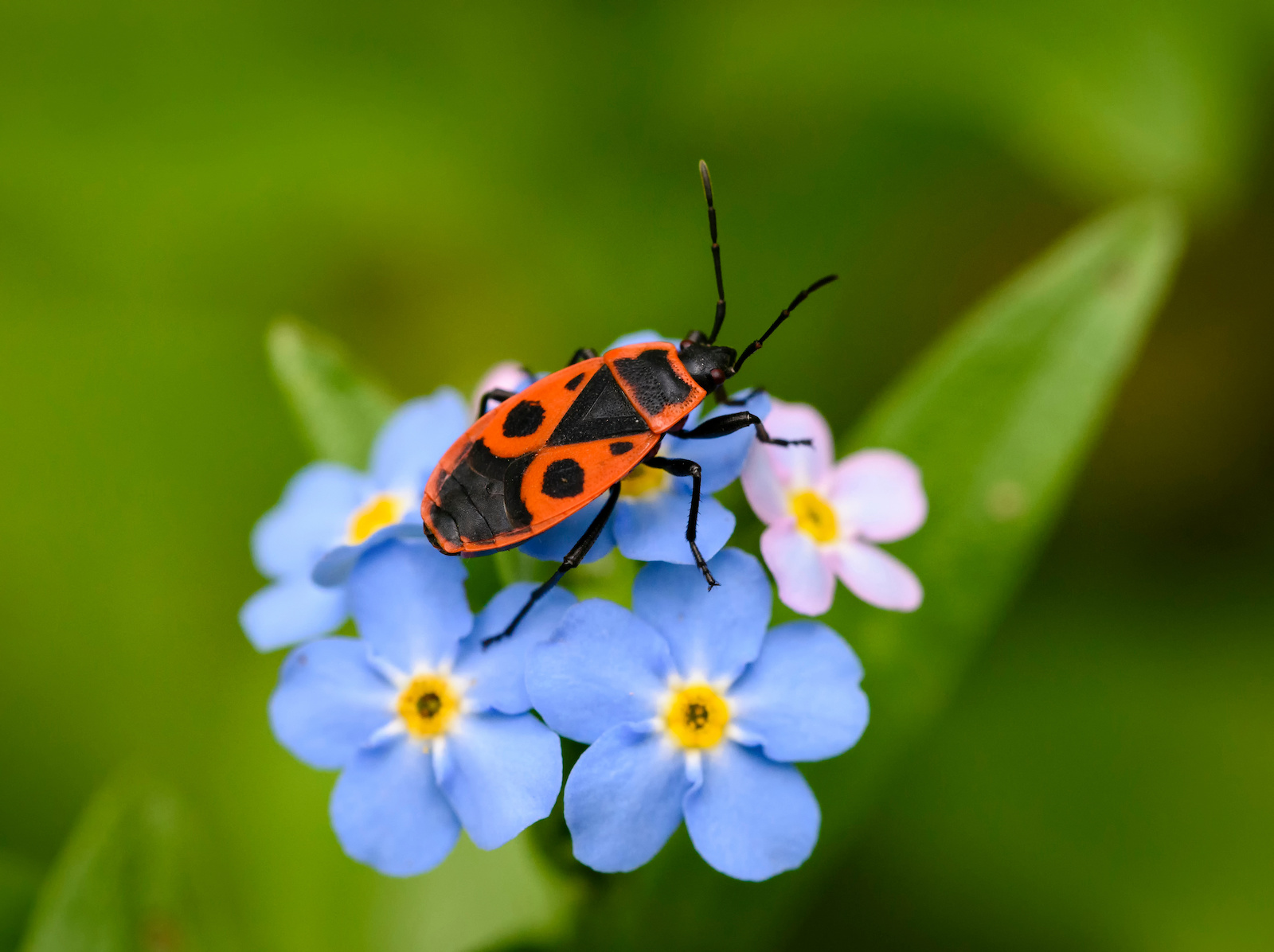
The European Firebug is a small, bright red or orange bug with black spots, found all over Europe. They like to hang out in big groups on trees and the ground, eating seeds from linden, mallow, and hibiscus plants. They’re not harmful to people or crops, making them interesting to see but not a pest. Their bright colors might look dangerous, but they’re harmless and can even help gardens by eating potential weed seeds.
14. Garibaldi Fish
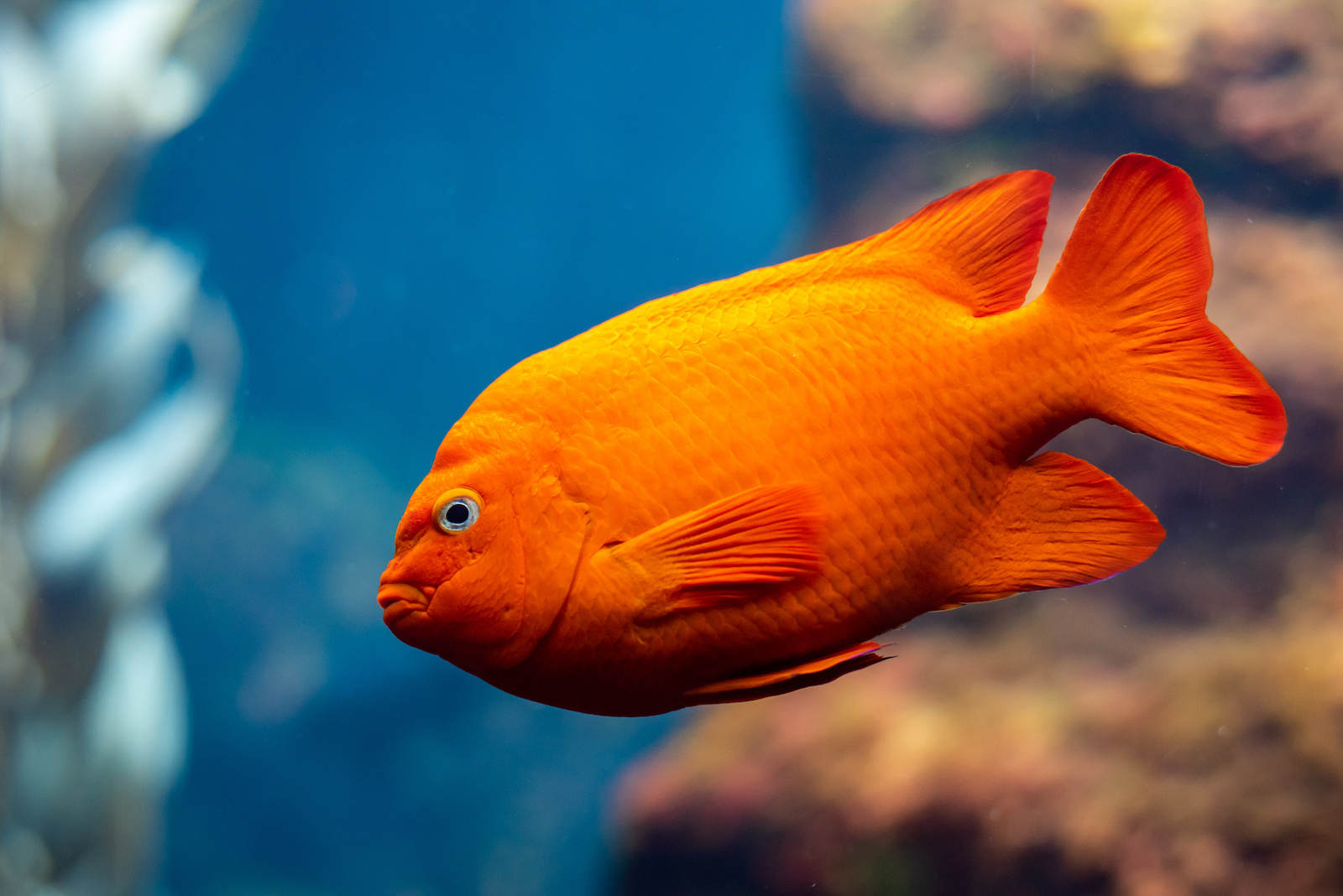
The Garibaldi Fish is a bright orange fish that lives in the Pacific Ocean, from Baja California to Monterey. It’s California’s official marine fish. They’re small, up to 15 inches long, but are very territorial, especially around their nests. Despite their size, their vivid color and bold behavior make them stand out.
15. Golden Lion Tamarin
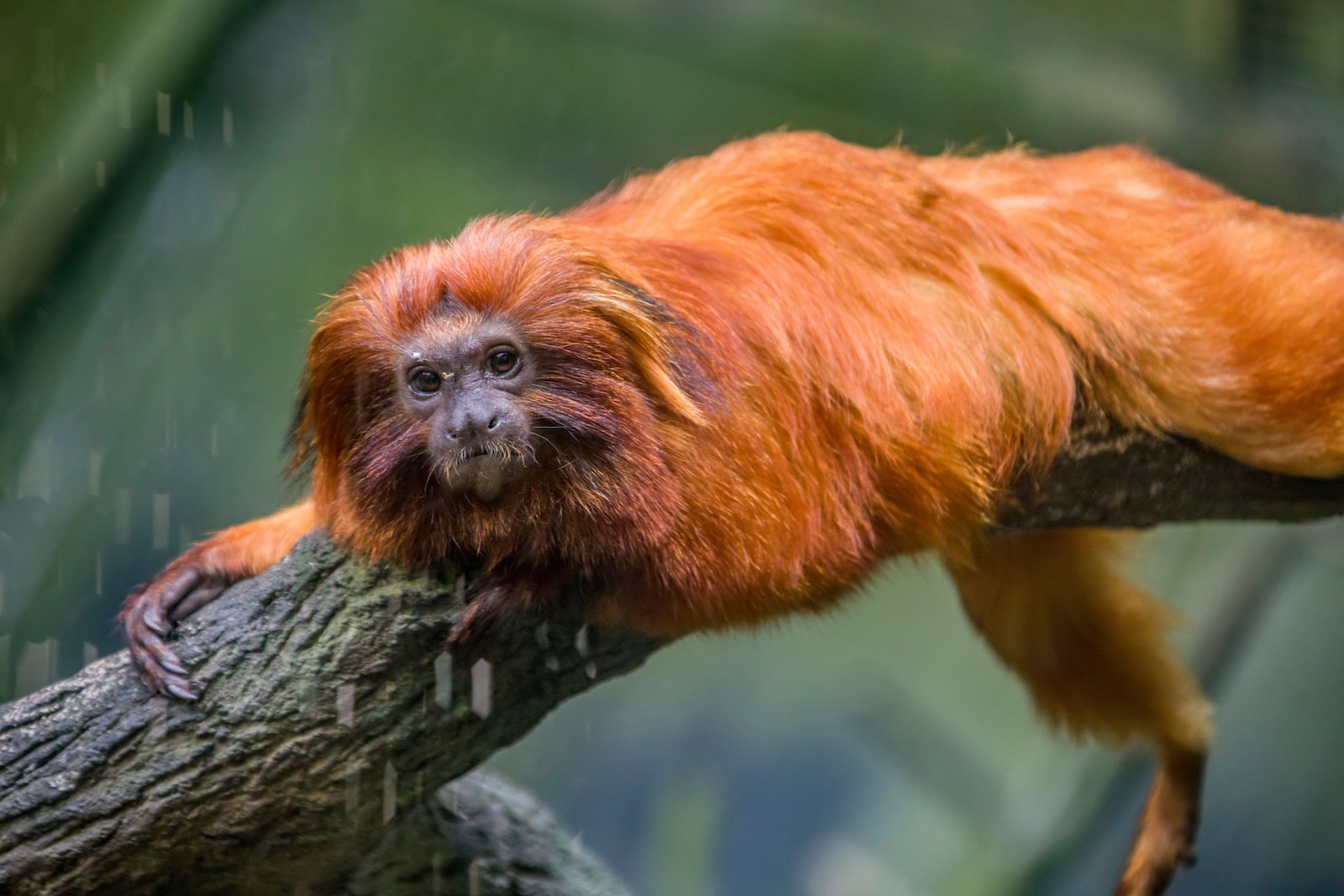
The Golden Lion Tamarin is a small, bright orange monkey from Brazil’s coastal forests, looking a bit like a lion because of its fur. It’s very rare and in danger of disappearing. These monkeys live in groups, eat fruits and bugs, and everyone helps take care of the babies. People are working hard to save them by fixing their homes in the forest and moving them back into the wild.
16. Golden Mantella
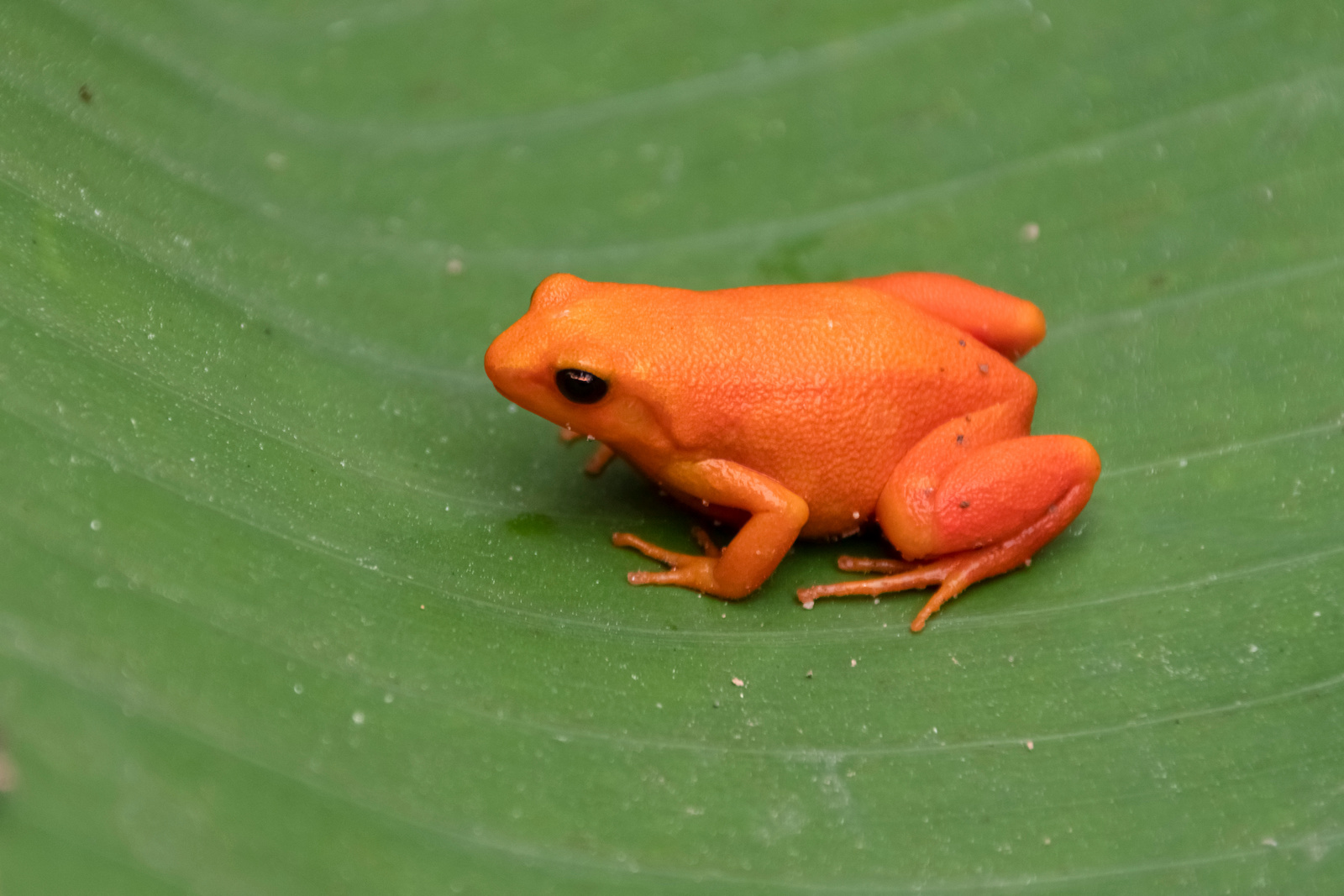
The Golden Mantella is a small, bright orange frog from Madagascar. It’s colorful to warn predators it’s toxic. These frogs live in forests and wet areas and are active in the daytime. They’re very rare now because of lost habitats and being taken for pets. Their bright color is eye-catching.
17. Marbled-Orbweaver
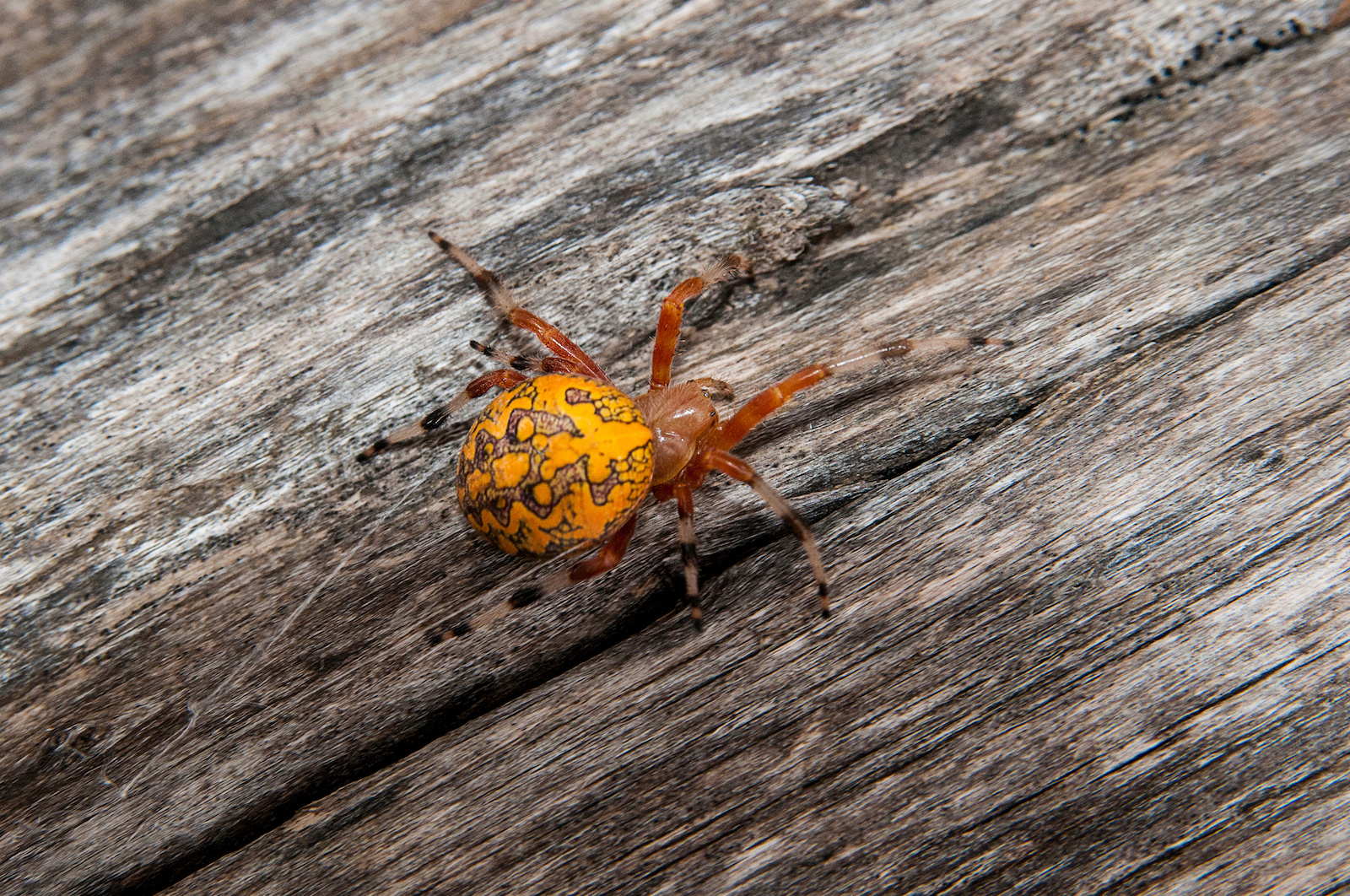
The Marbled-Orbweaver, also known as Araneus marmoreus, is a distinctive spider known for its striking orange and yellow marbled pattern. Found in forests and gardens across North America and Europe, it spins large, circular webs to catch its prey. This spider is particularly noted for its beautiful orb-shaped web and the pumpkin-like appearance of its abdomen.
18. Monarch Butterflies
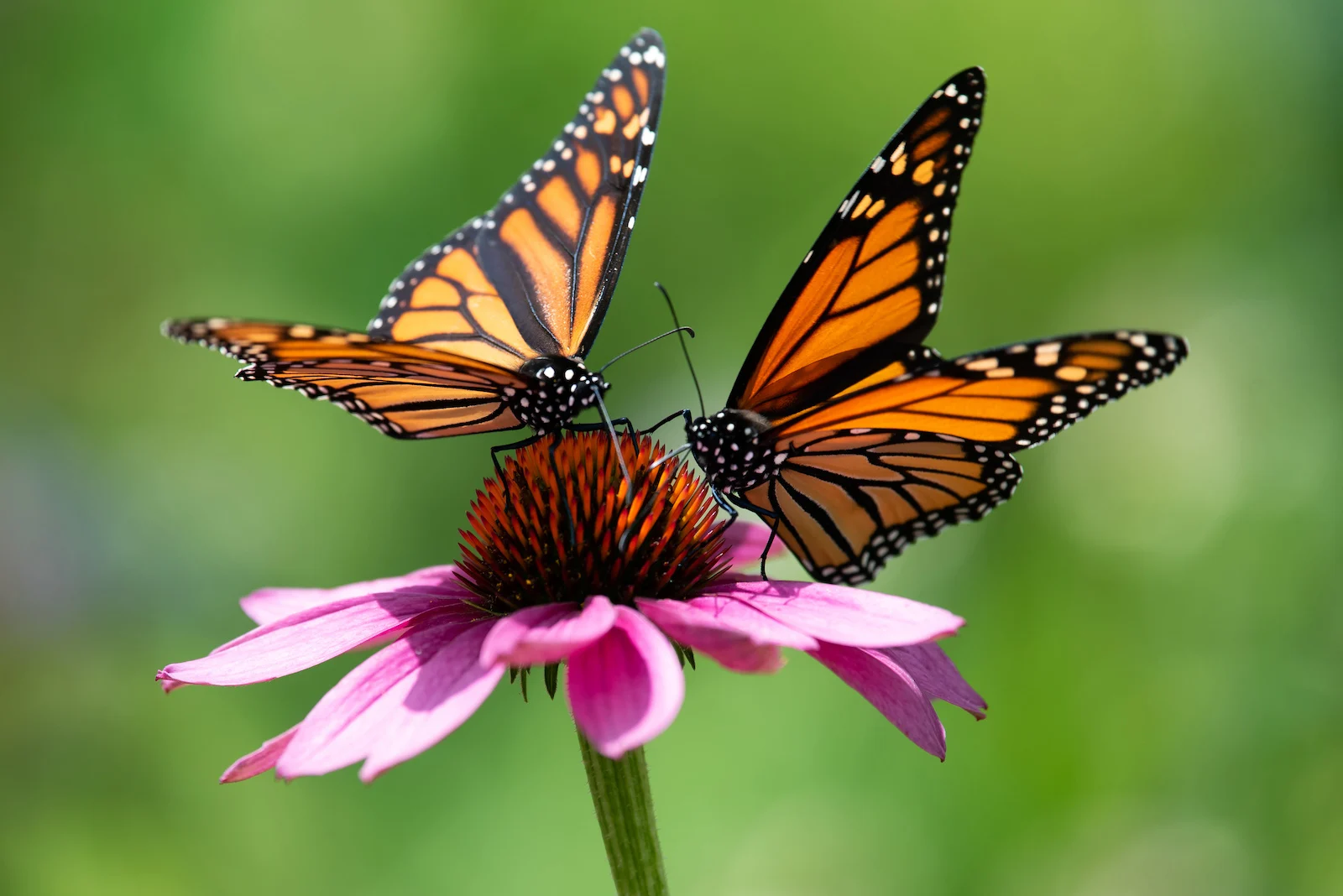
Monarch butterflies are known for their orange and black wings and amazing long trips, flying thousands of miles from North America to Mexico for the winter. This journey takes several generations to finish. They show us how healthy the environment is because their numbers drop with climate change, loss of living spaces, and pesticides. Saving them means protecting milkweed plants, where they lay eggs and their caterpillars eat.
19. Nectarines
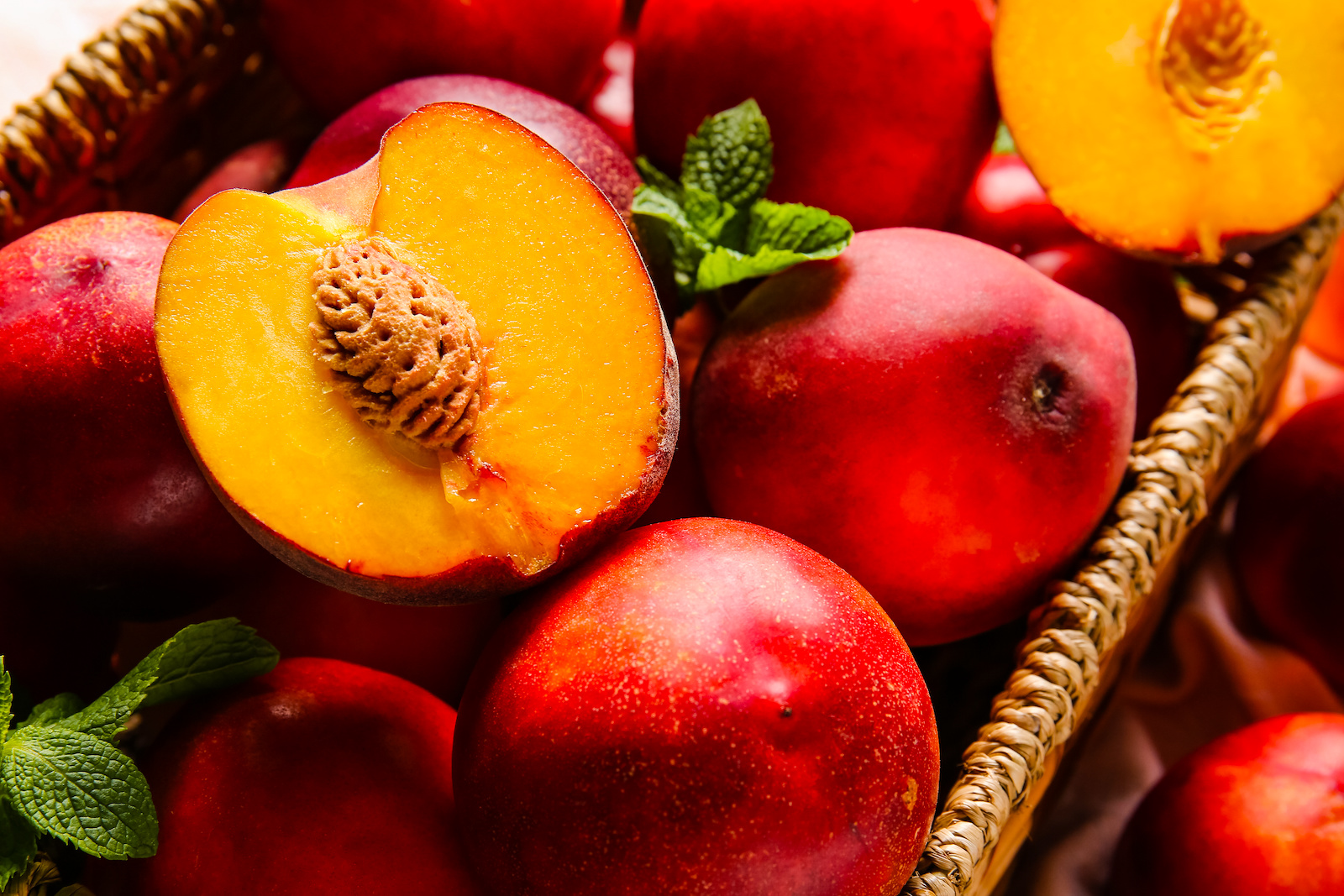
Nectarines are like peaches but with smooth skin and can be orange. They’re sweet and a bit tangy, good for you because of vitamins and stuff that keeps you healthy. They’re just a type of peach that changed naturally to have smooth skin. You can eat them on their own or use them in cooking to make food taste sweeter.
20. Orange Bonnet
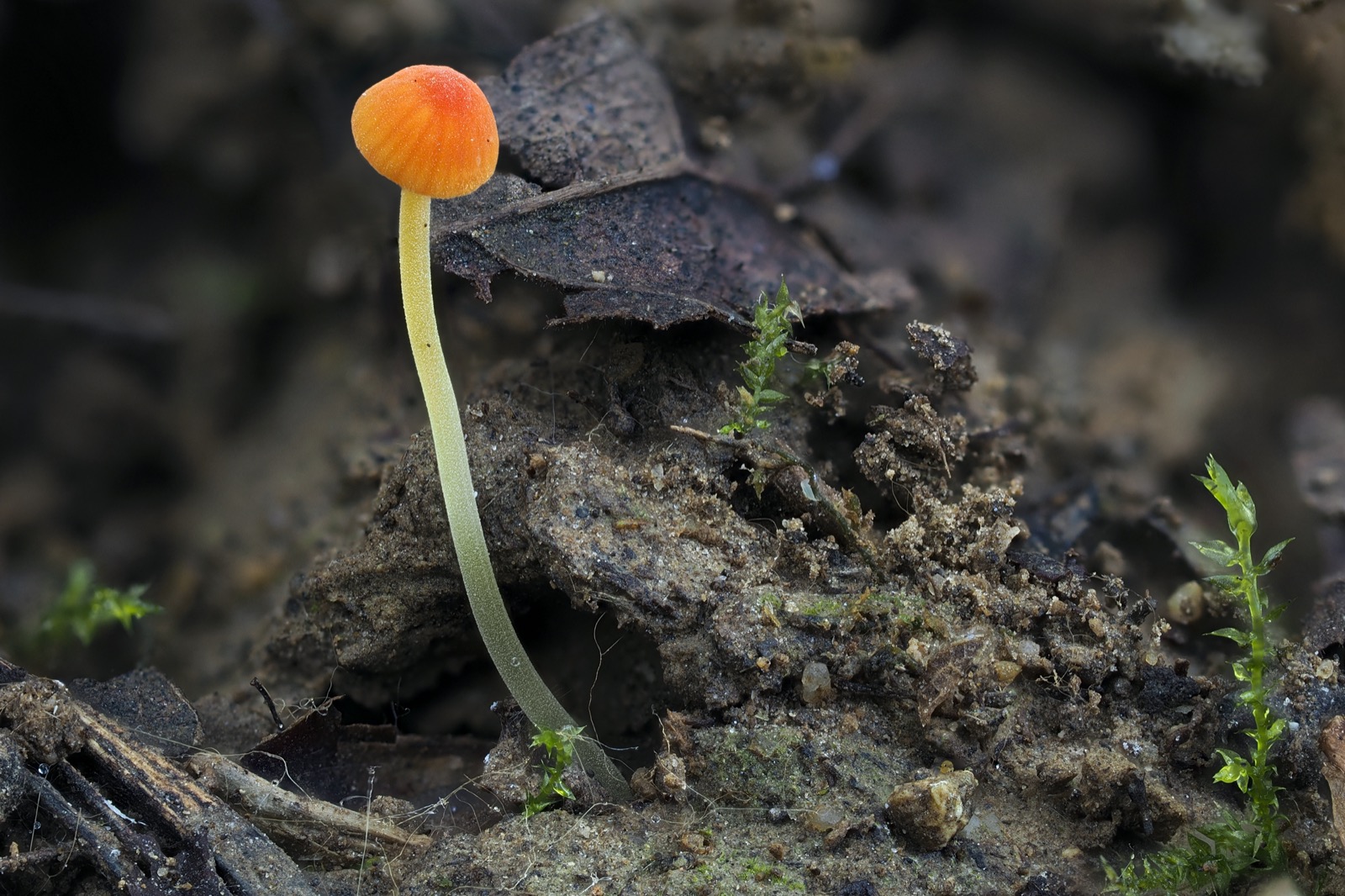
The Orange Bonnet is a small, bright orange mushroom found in forests in North America and Europe, usually growing on old wood. It’s easy to spot because of its color. It’s part of a big mushroom family with many colors, but this one is special for its orange look. It’s not for eating, mainly because it’s tiny and people aren’t sure if it’s safe to eat.
21. Orange Calcite
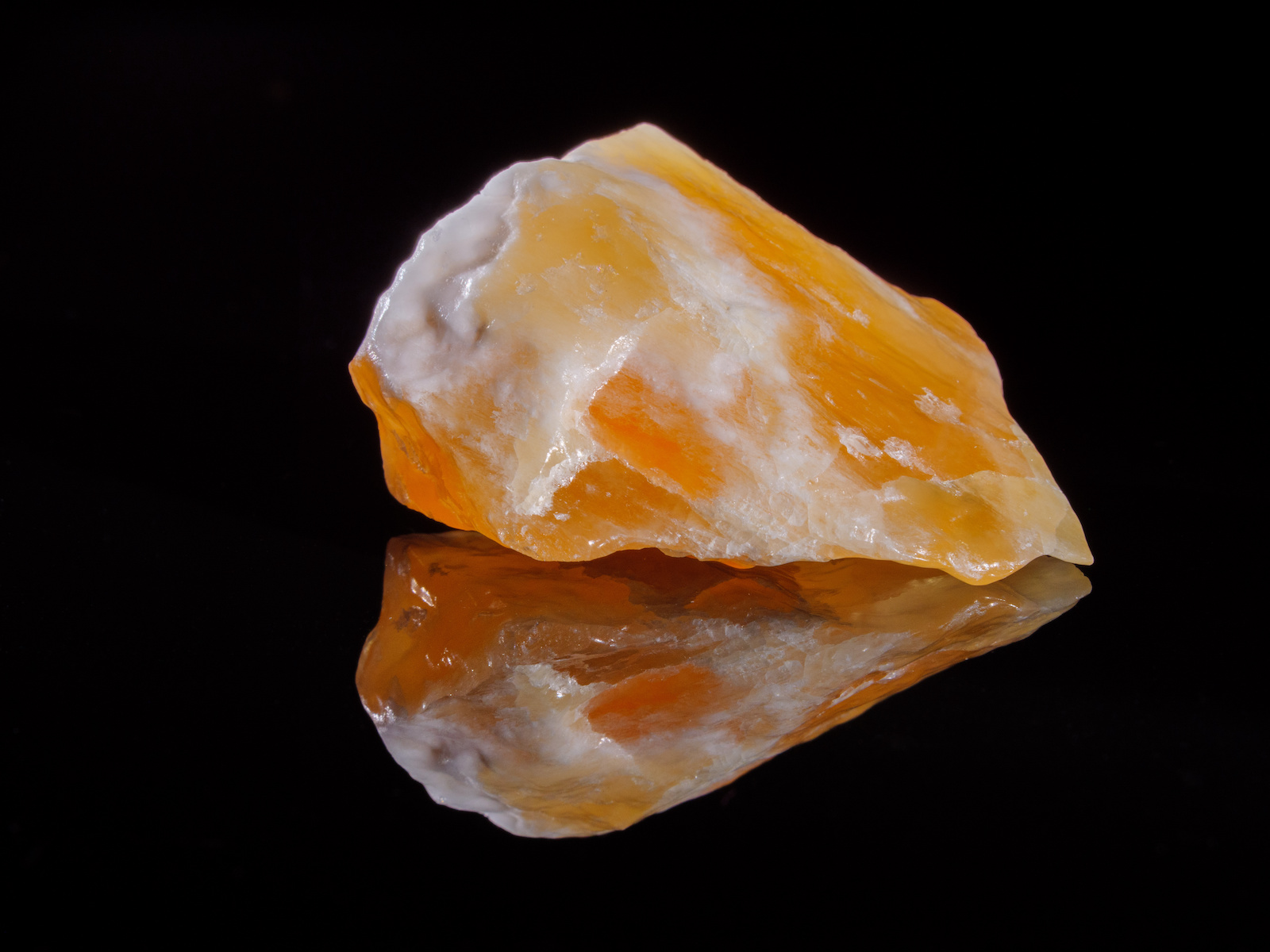
Orange Calcite is a bright orange crystal that makes people feel happier and more energized. It’s found in many places and is made of a mineral called calcium carbonate. People believe it helps with creativity, motivation, and getting over fear. It’s also thought to clean and boost energy, so it’s used a lot in healing and meditation. Plus, it’s cheerful color makes it great for decorations and jewelry.
22. Orange Gerbera Daisy
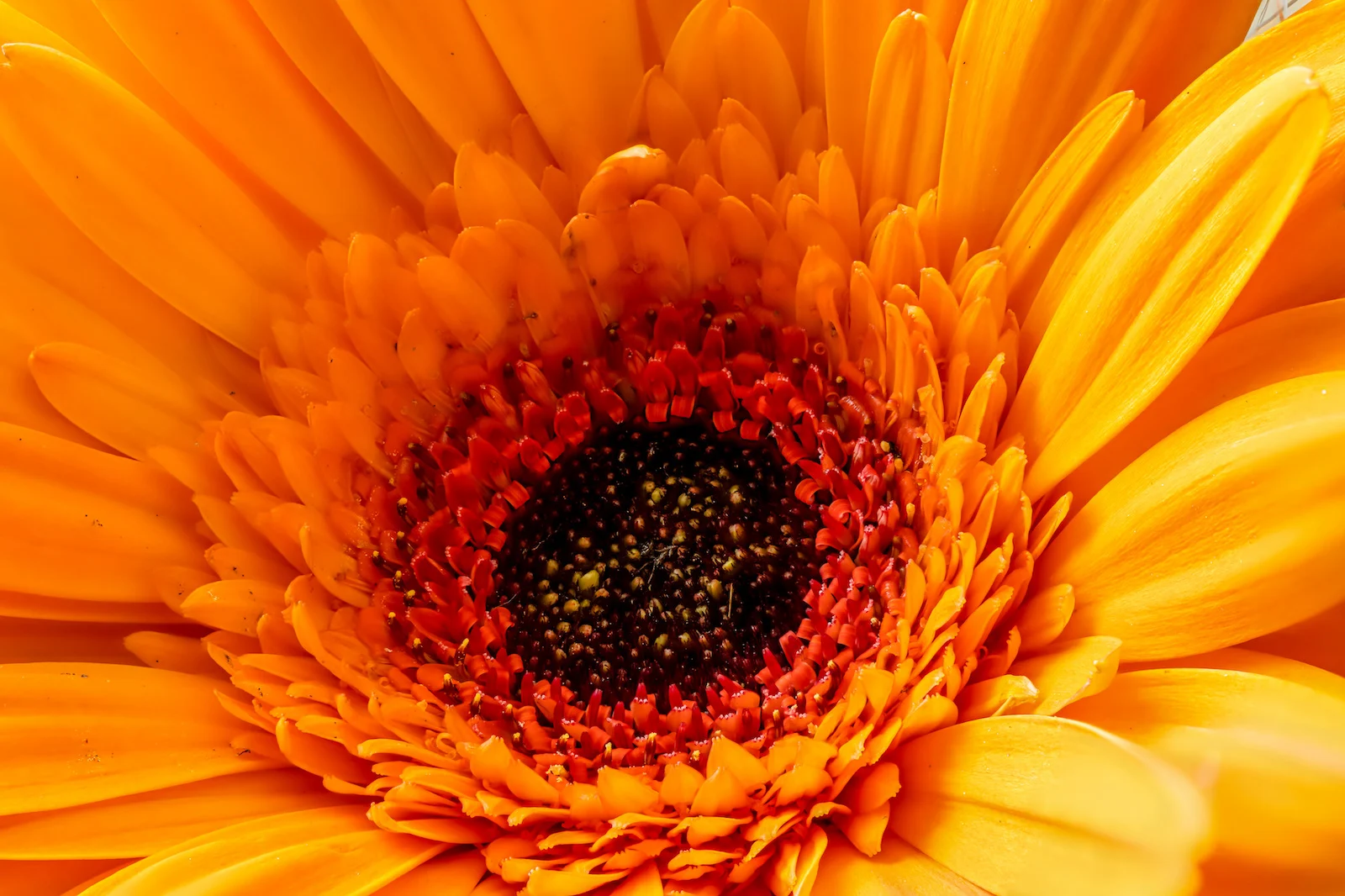
The Orange Gerbera Daisy is a bright, happy flower with big orange petals. It stands for energy and happiness and is great for adding color to places. It comes from South Africa and can even clean the air by taking away toxins, making it good for both looks and health in your home.
23. Oranges
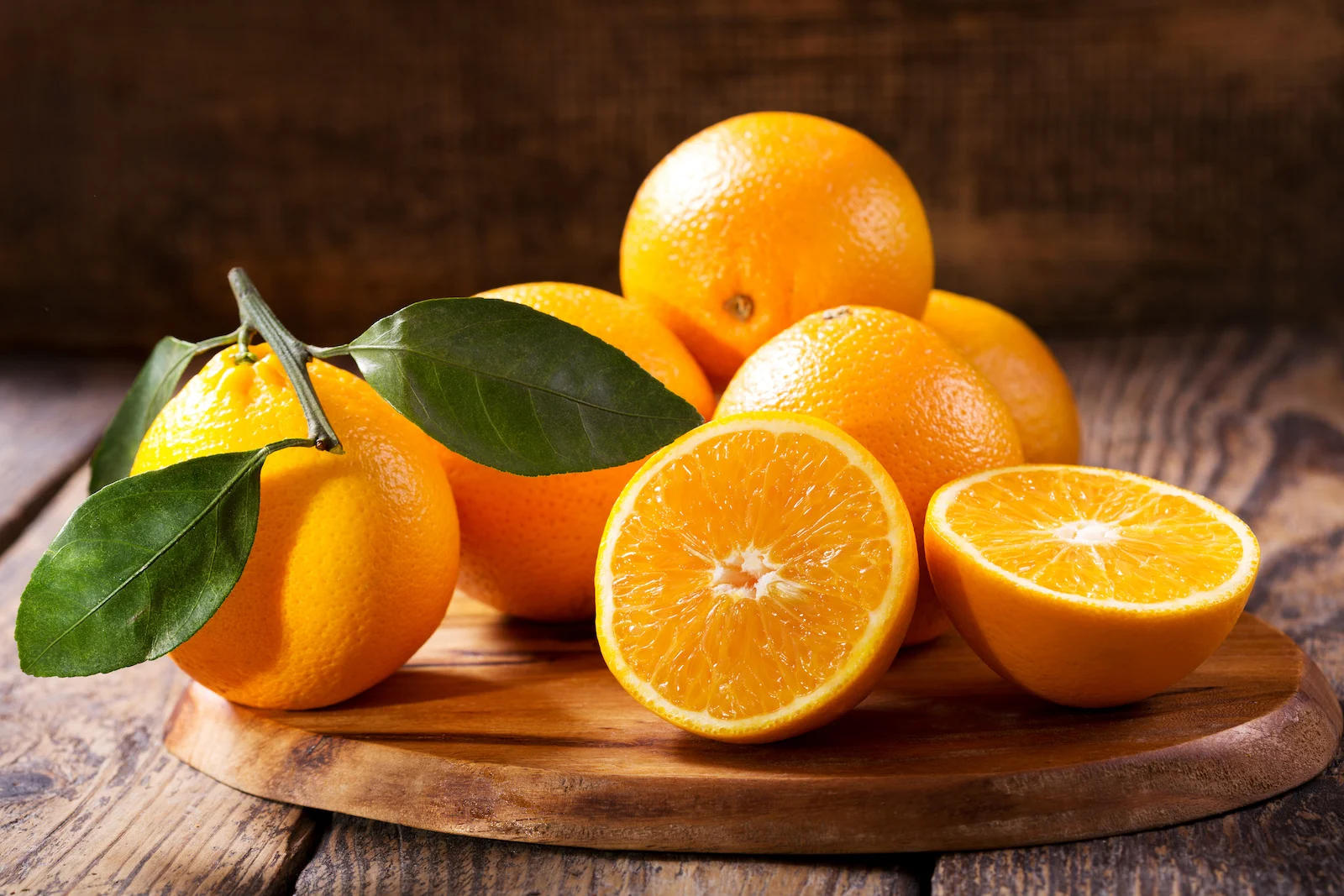
Oranges are a popular fruit known for their round shape and bright orange color. They’re packed with vitamins, especially vitamin C, which is good for your immune system. Oranges come in many varieties, from sweet to bitter, and are grown in warm climates around the world. An interesting fact about oranges is that they’re a type of berry according to botanical classification.
24. Orange Bell Pepper
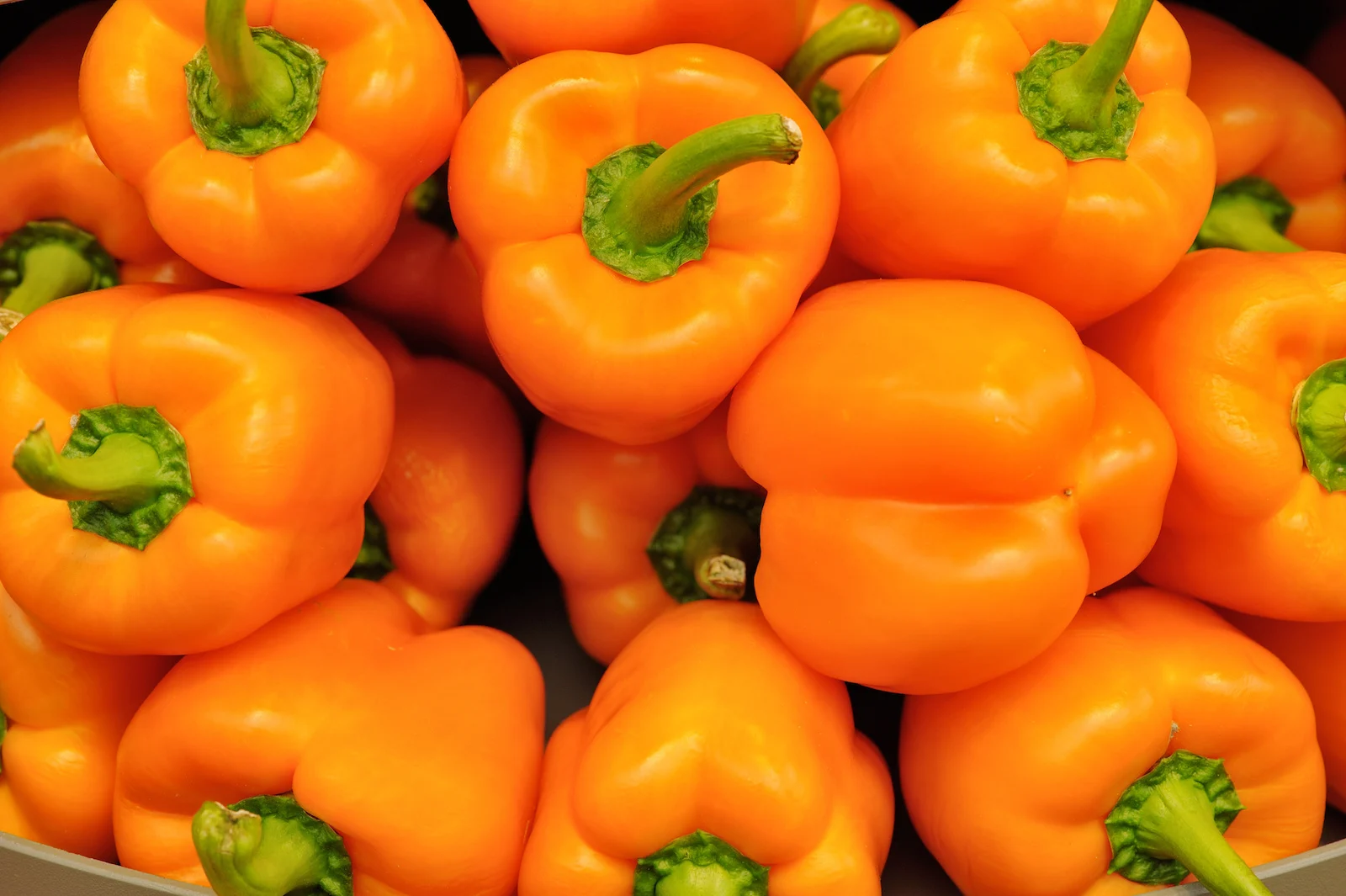
Orange Bell Peppers are a type of sweet pepper that stands out for their vibrant orange color. They are crunchier and sweeter than their green counterparts, making them a favorite in salads, stir-fries, and snacks. These peppers are rich in vitamins A and C, promoting eye health and boosting the immune system. They are versatile vegetables, adding both nutrition and color to a variety of dishes.
25. Red Fox
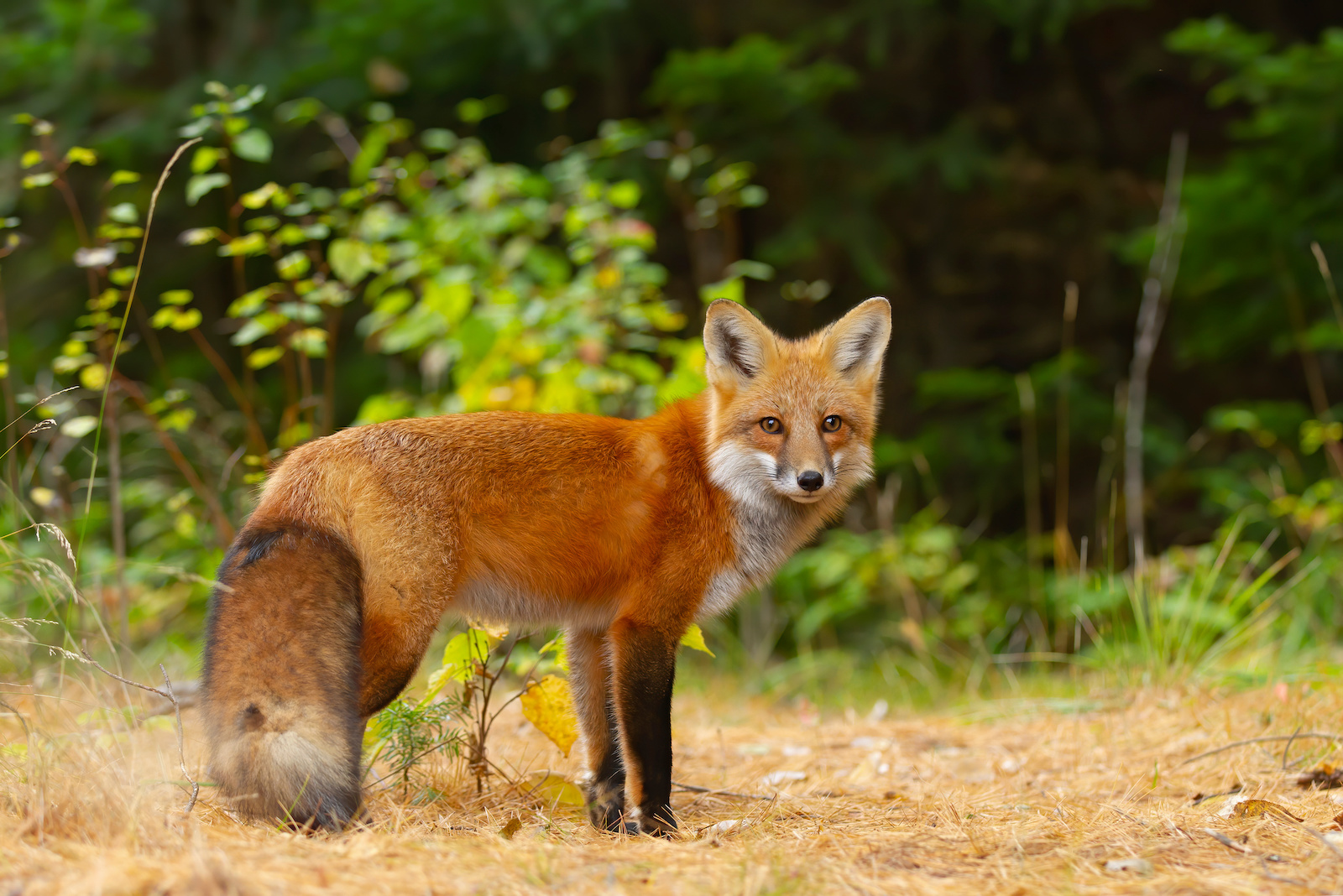
The Red Fox is a smart, adaptable animal found almost everywhere, from the countryside to cities. It’s easy to spot with its red coat, white belly, black legs, and fluffy tail with a white tip. Red Foxes eat almost anything, like mice, birds, and even fruits. They’re good at living near people and are often in stories and myths because of their clever nature.
26. Pumpkin

Pumpkins are large, round vegetables known for their thick, orange skin and the fact that they grow on vines. They’re a symbol of fall and are famous for Halloween as jack-o’-lanterns. Besides being decorative, pumpkins are edible and nutritious, rich in vitamins, especially vitamin A, and fiber. An interesting fact about pumpkins is that they’re considered a fruit because they contain seeds.
27. Wild Canary
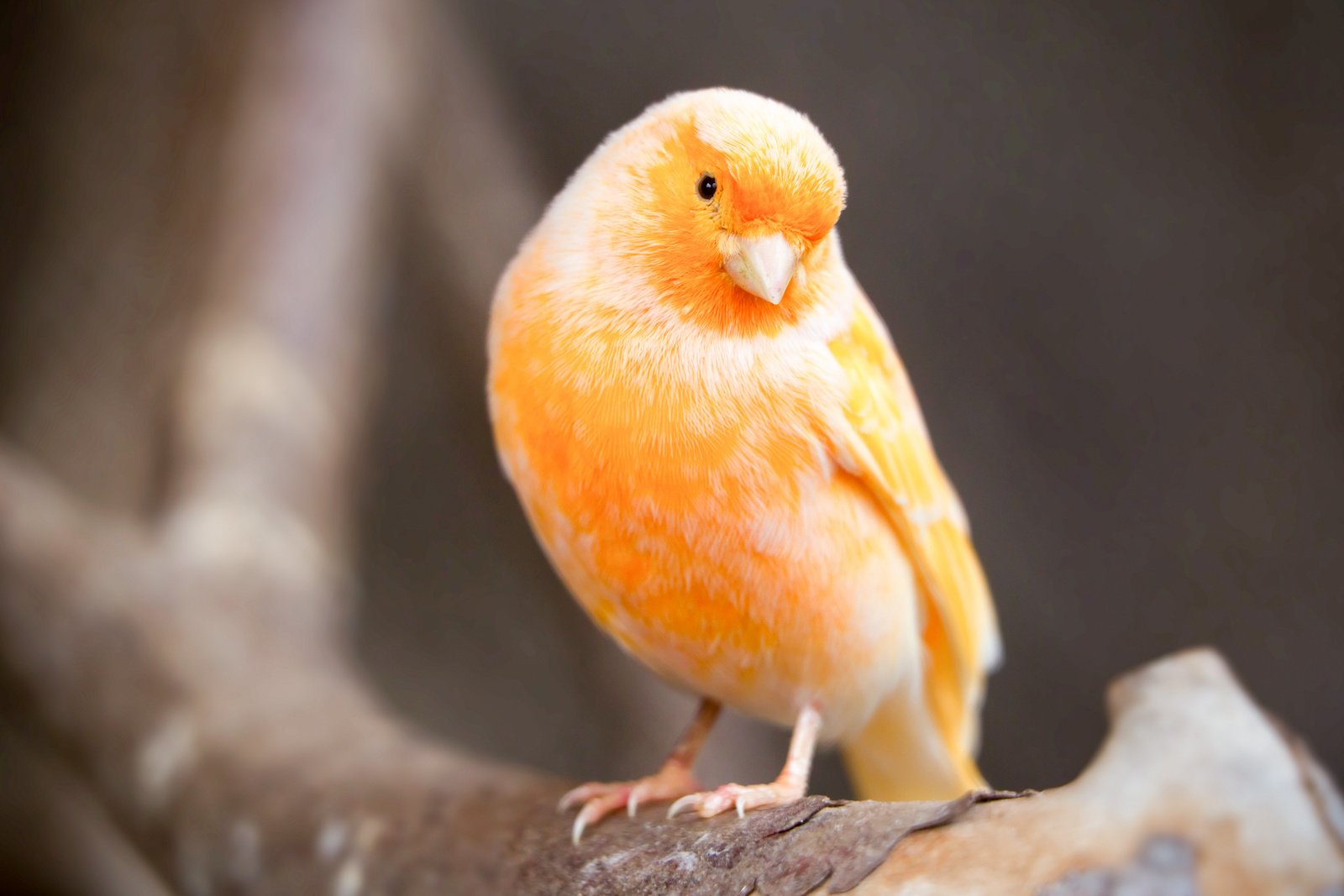
The Wild Canary is a small, bright yellow bird from places like the Canary Islands. They’re known for their beautiful singing and were once used in coal mines to detect dangerous gases, acting as an early warning for miners. Today, they’re loved for their cheerful songs and colorful appearance.
28. Bearded Dragon
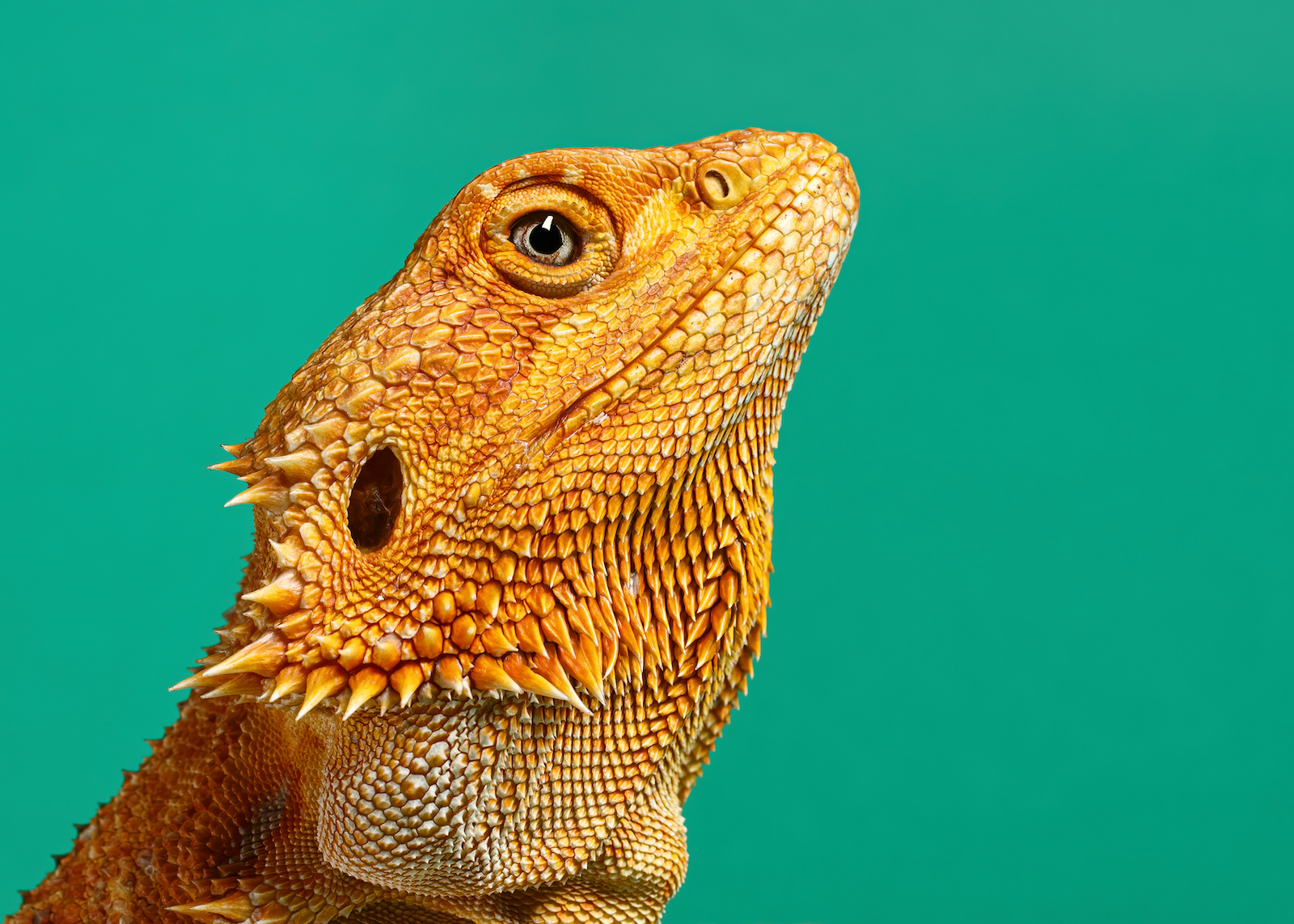
The Bearded Dragon is a type of lizard that’s native to Australia, known for its distinctive “beard” of spiky scales under its chin, which puffs up and turns black when it feels threatened or is trying to show dominance. These lizards are popular pets due to their docile nature and the ease of caring for them. They can grow up to 24 inches long and have a varied diet, eating everything from fruits and vegetables to insects.
29. Orange Entoloma Quadratum Mushroom
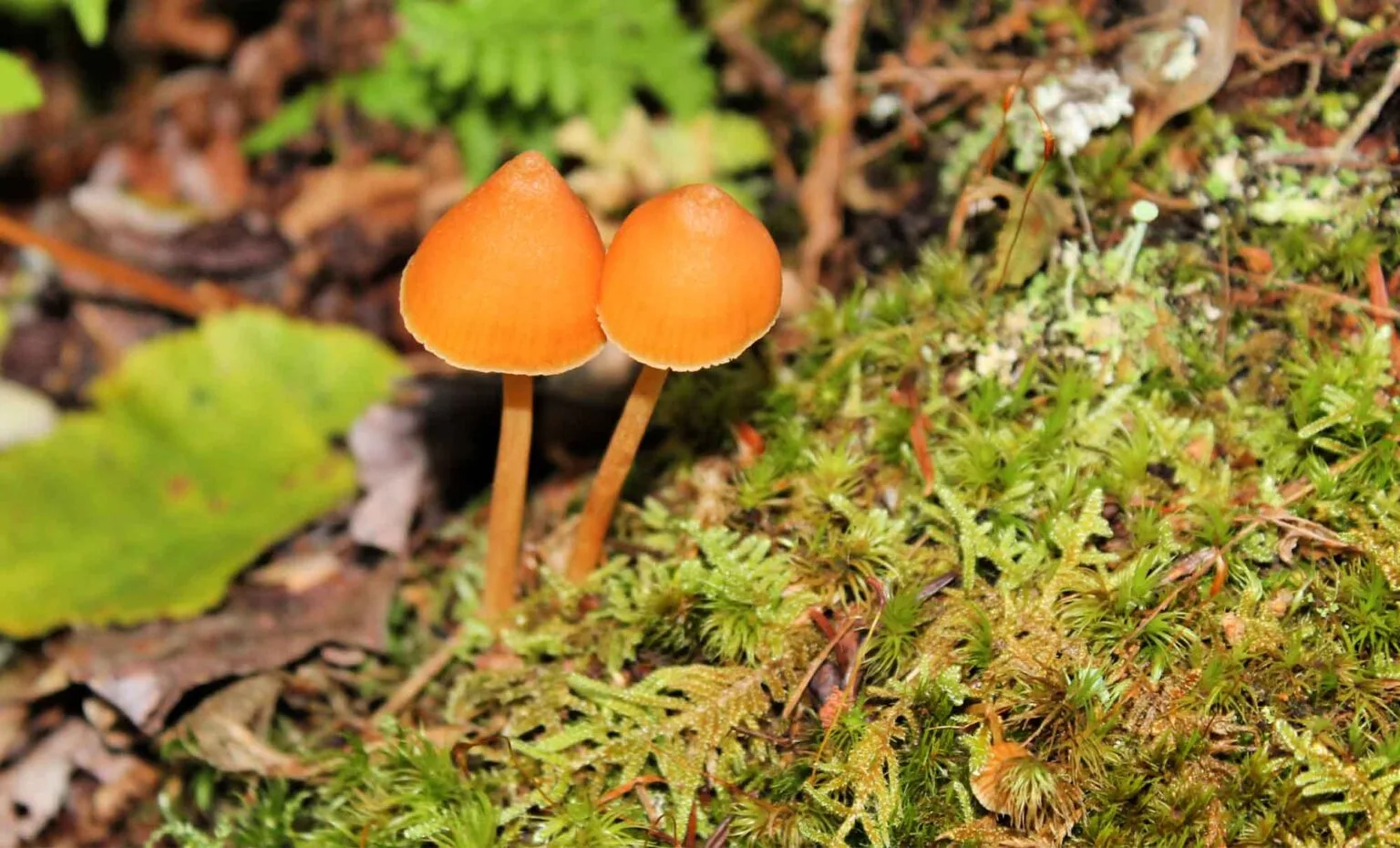
The Orange Entoloma Quadratum is a rare, bright orange mushroom known for its unique square spores. It grows in woods near certain trees like oaks. Because it’s hard to find and needs a specific place to live, mushroom lovers are excited to spot it. However, it’s not safe to eat due to possible toxins, so it’s appreciated more for how it looks than for cooking.
30. Marigold Flowers
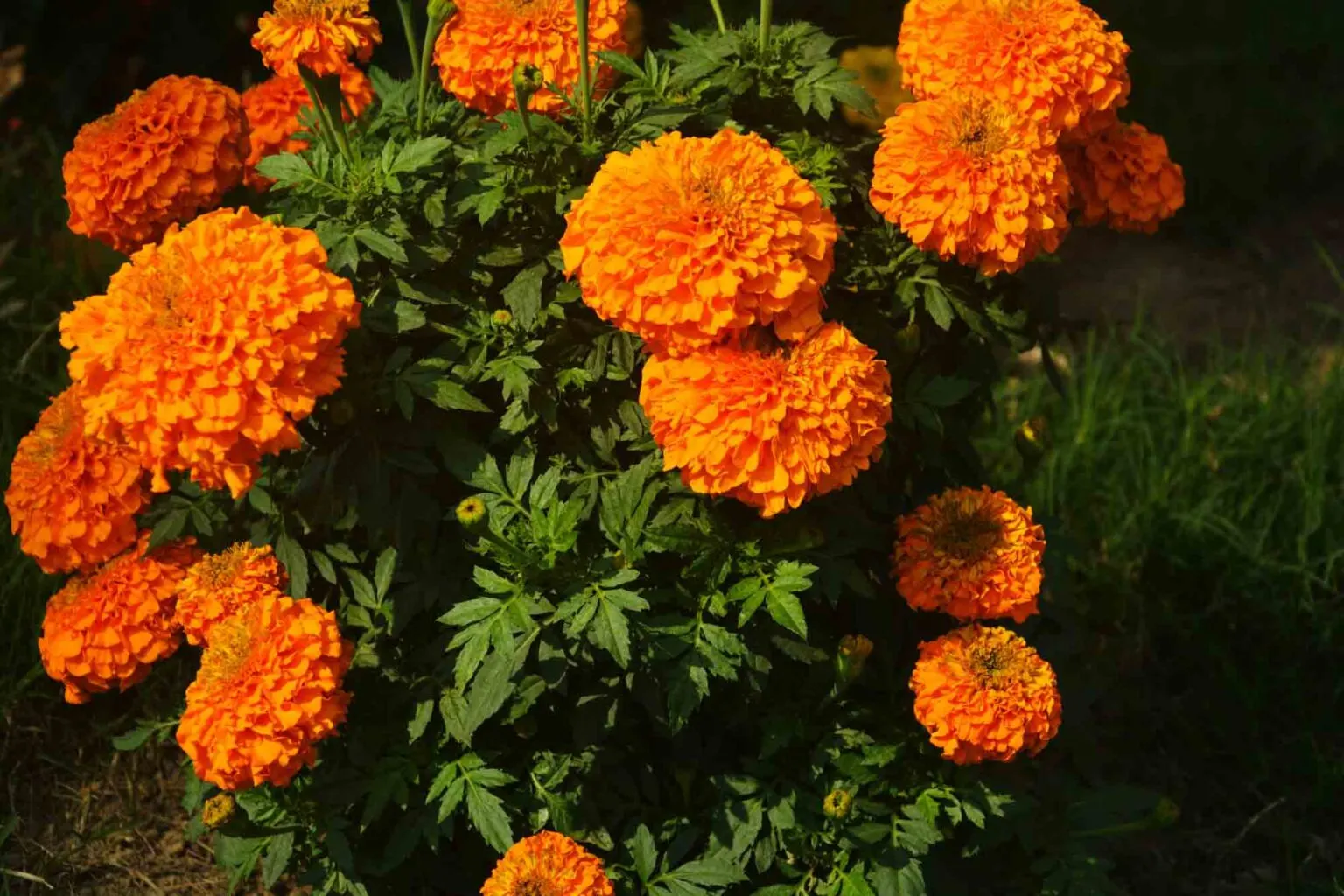
Marigold flowers are bright and easy to care for, coming in yellow, orange, and red. They keep pests away and help vegetable gardens by attracting good bugs. Marigolds smell unique and have been used in traditions and as natural remedies for skin problems for a long time.
31. Zinnia
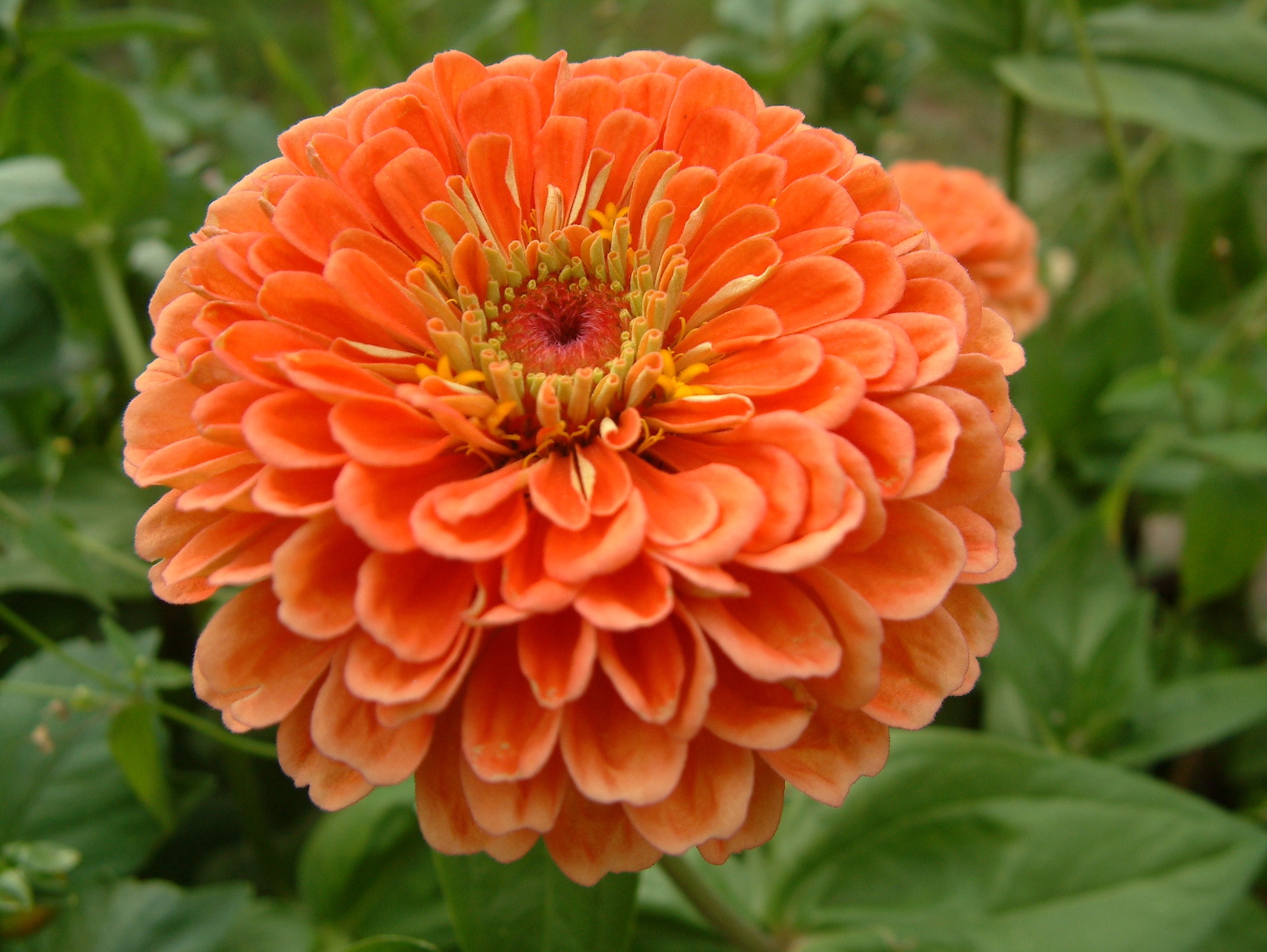
Zinnias are colorful flowers that bloom in a variety of vibrant colors, including orange, pink, purple, red, and yellow. They’re known for their ability to thrive in hot, sunny conditions, making them a popular choice for summer gardens. Zinnias attract butterflies and bees, adding life and color to any outdoor space. An interesting fact about zinnias is that they were originally from Mexico and are highly valued for their long-lasting flowers, which make excellent cut flowers for bouquets.
32. Cantharelles Mushrooms
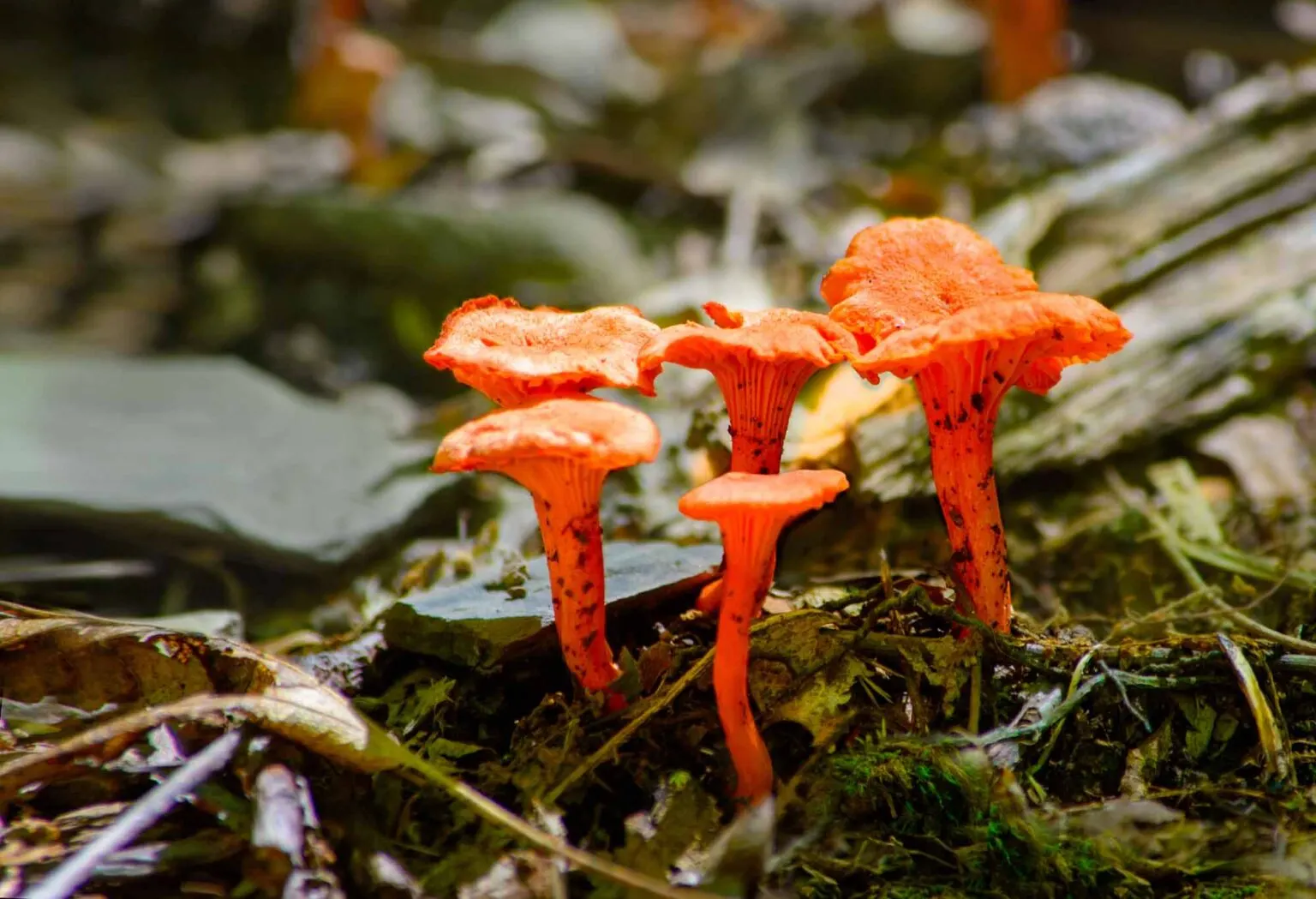
Chanterelle mushrooms are famous for their bright yellow color, unique shape, and fruity smell. They grow in woods, helping trees get nutrients. Chefs love them for their light, tasty flavor. They can’t be farmed, so finding them wild is special, especially from late summer to fall.
33. Tangelo Fruit
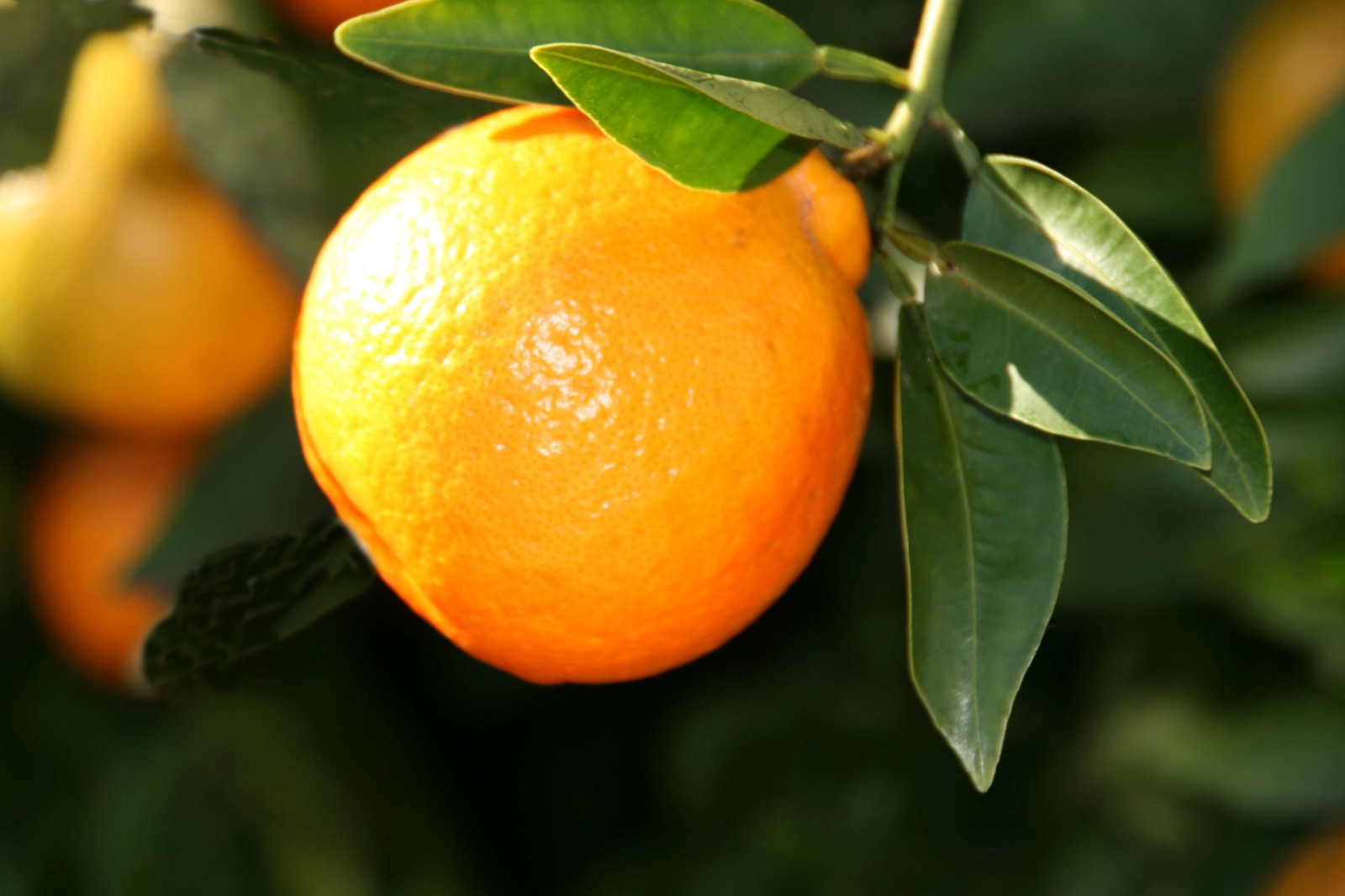
The Tangelo is a juicy and sweet citrus fruit, a hybrid between a tangerine and a pomelo or grapefruit, known for its vibrant orange skin and slightly protruding stem end, resembling a navel. This fruit combines the sweet flavor of tangerines with the slightly tart taste of grapefruit, making it a unique and refreshing snack. Tangelos are easy to peel and are often seedless or have very few seeds, making them convenient for eating.
34. Tangerines
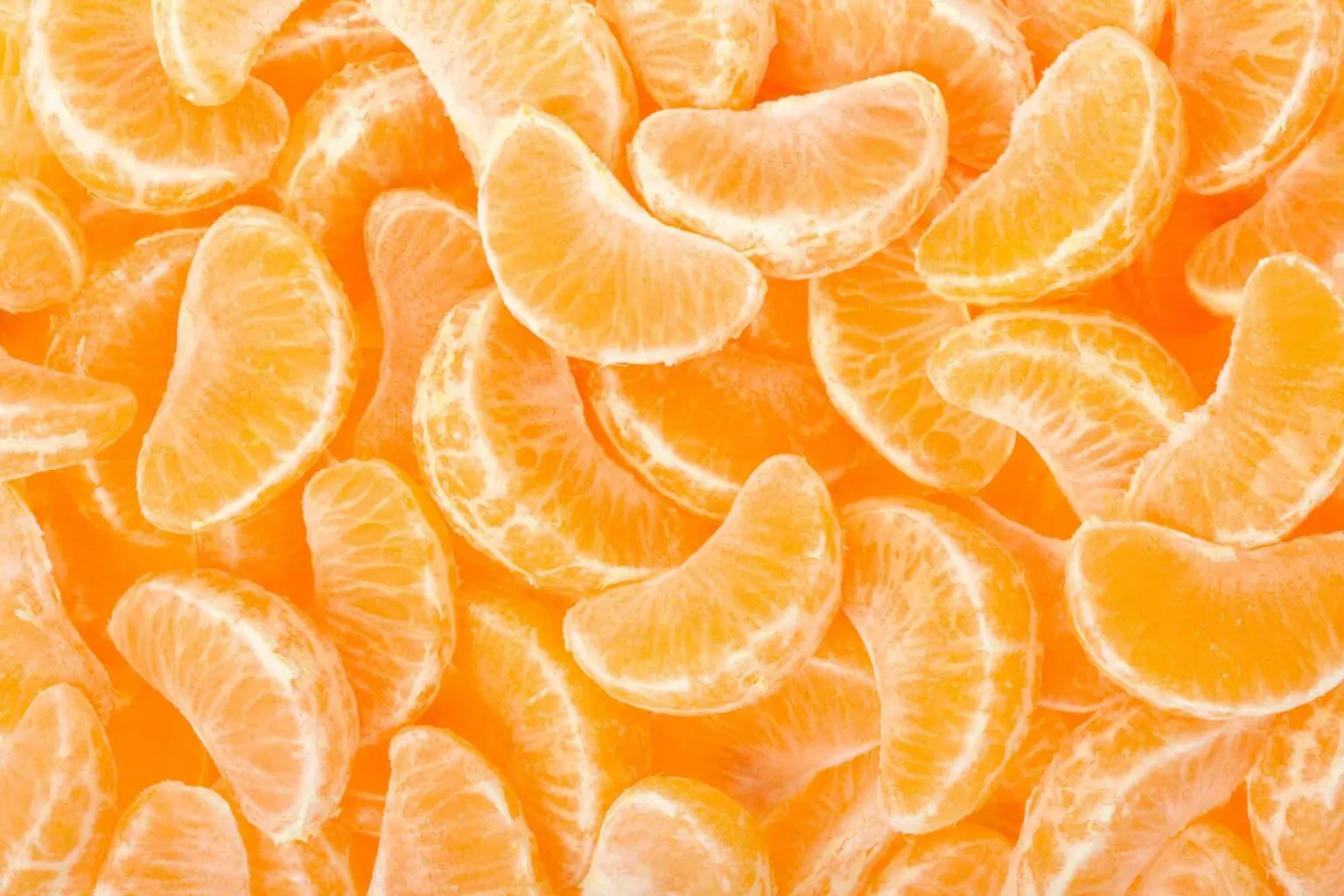
Tangerines are a type of small, sweet citrus fruit with a deep orange skin that’s easy to peel. They’re similar to oranges but are smaller, with a more intense flavor and a softer, juicier texture. Tangerines are packed with vitamin C and are a healthy snack option. They’re versatile in cooking and baking, adding a zesty flavor to dishes and desserts.
35. Orange Cosmos
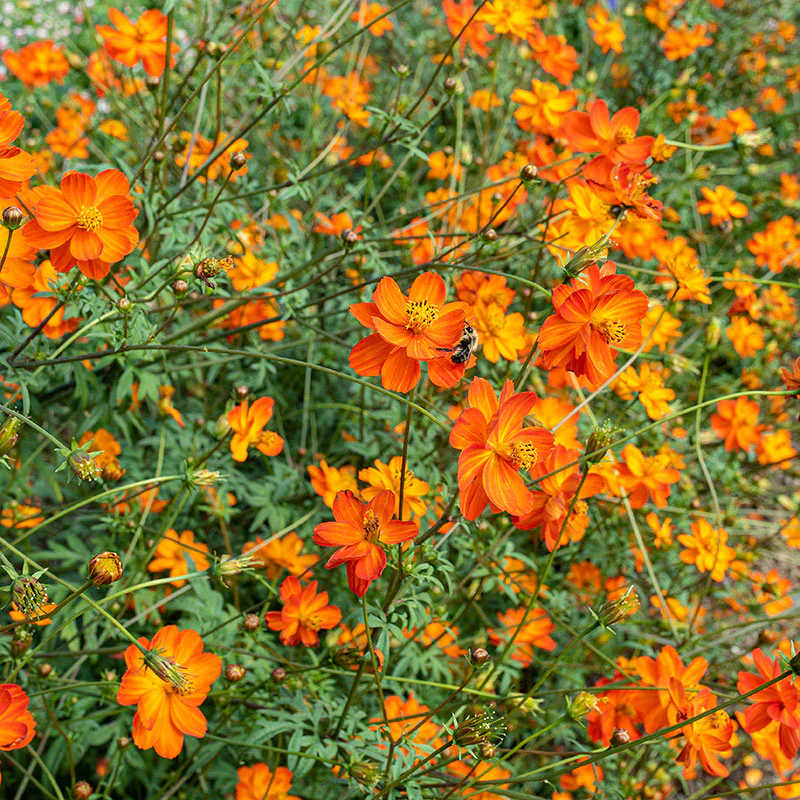
Orange Cosmos are eye-catching flowers with a bright orange color that adds a vibrant splash to any garden. Part of the Cosmos genus, these annual plants are known for their simple, daisy-like flowers and feathery foliage. They bloom from mid-summer to fall, attracting bees, butterflies, and other pollinators with their lively hues and nectar.
36. Peaches

Peaches are a juicy, sweet fruit with a fuzzy skin and a distinctive fragrance. They come in white and yellow varieties, with the yellow ones being more acidic and the white sweeter and less acidic. Peaches are packed with vitamins, minerals, and antioxidants, making them not only delicious but also nutritious. They’re versatile in the kitchen, used in everything from fresh salads and smoothies to pies and jams.
37. Tigers
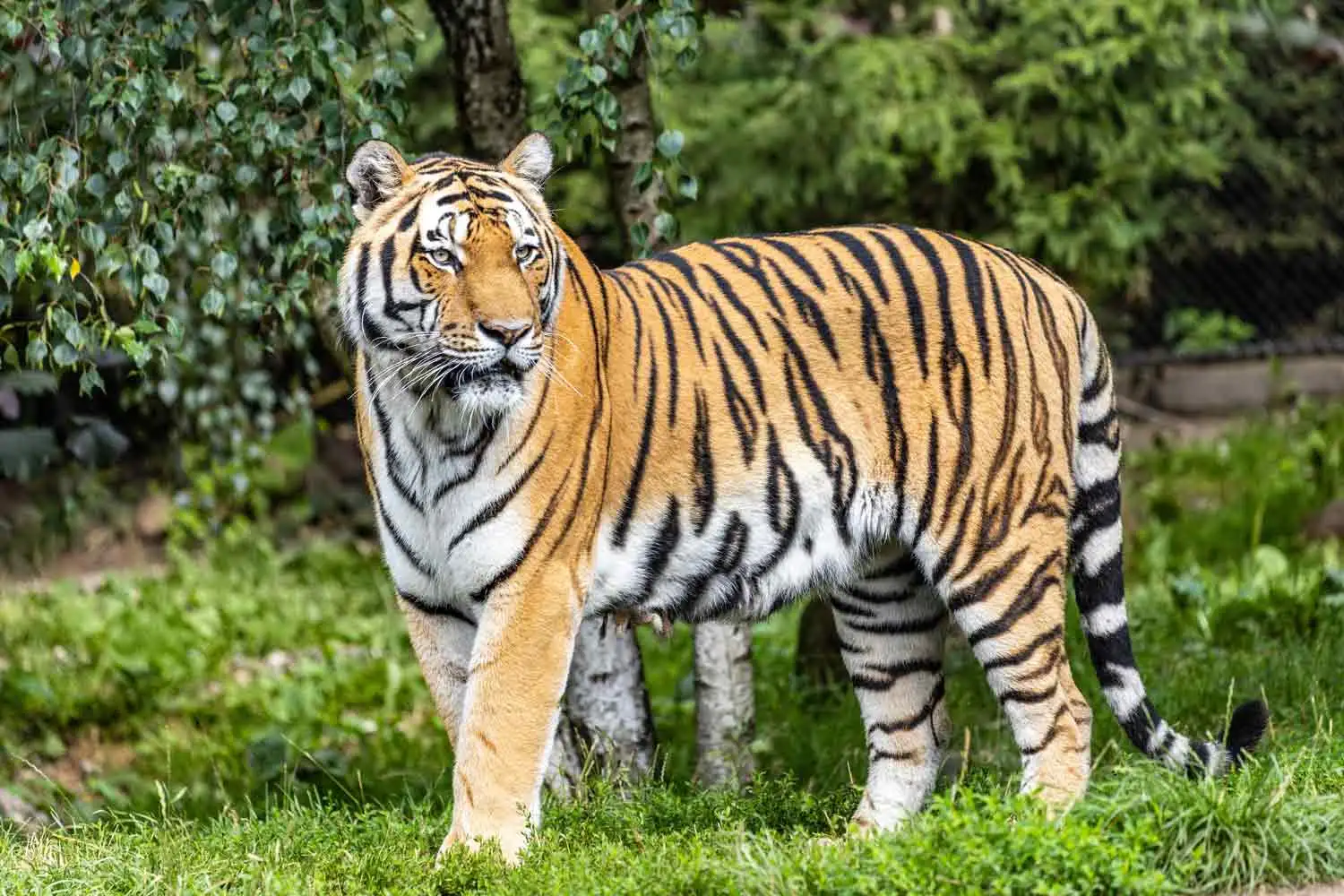
Tigers are majestic, large wild cats known for their striking orange fur with black stripes, making each tiger’s pattern unique, like human fingerprints. They are apex predators, meaning they’re at the top of the food chain, and play a crucial role in maintaining the health of ecosystems by controlling the populations of other animals.
38. Sira Poison Dart Frog
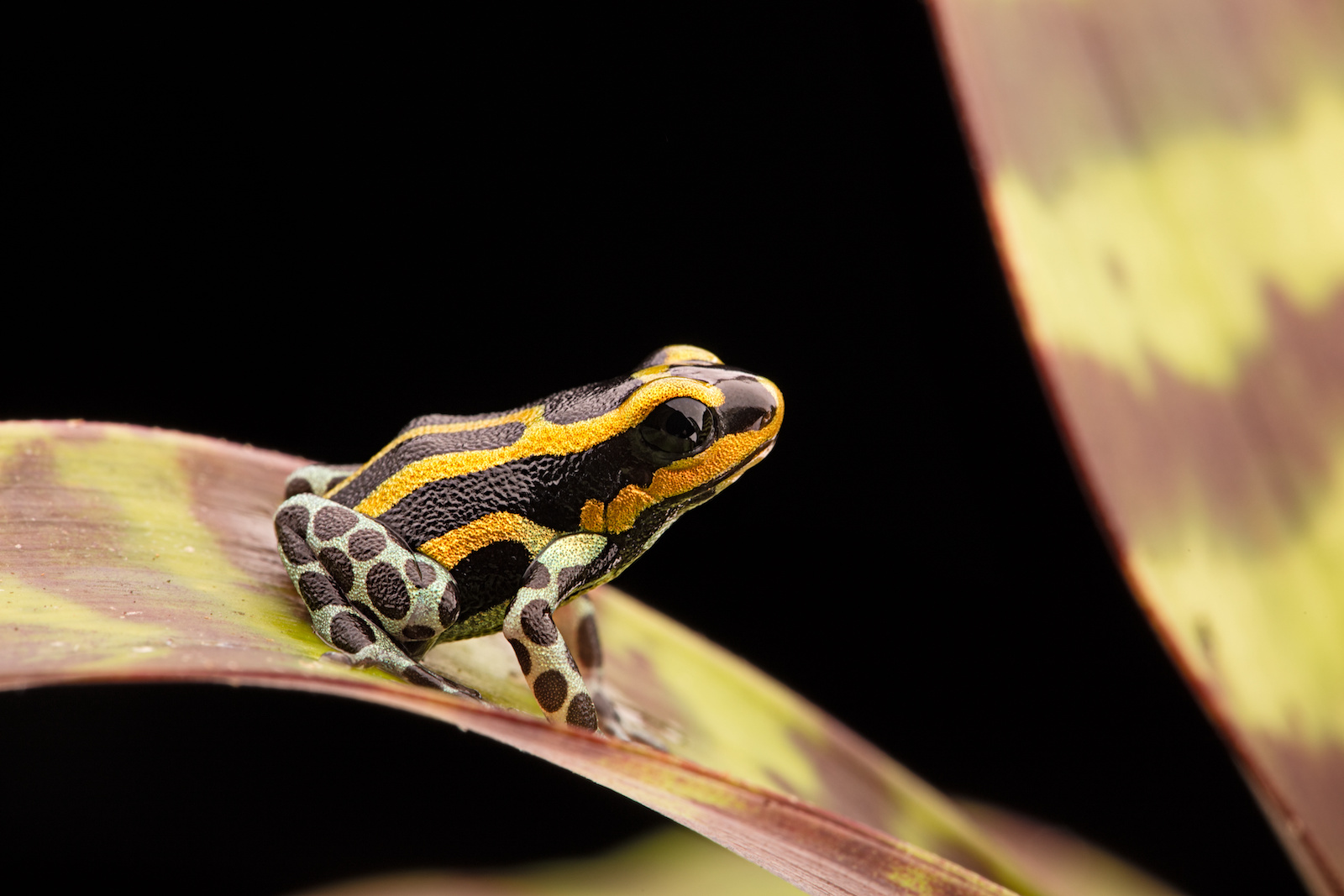
The Sira Poison Dart Frog is a tiny, bright orange frog from Peru’s Sira Mountains. It’s very poisonous, which keeps predators away. People used to use its poison for hunting darts. Now, it’s in danger because of habitat loss and the pet trade. Protecting them is important for their survival. Their ability to use poison for defense is a cool survival trick.
39. Sweet Potato
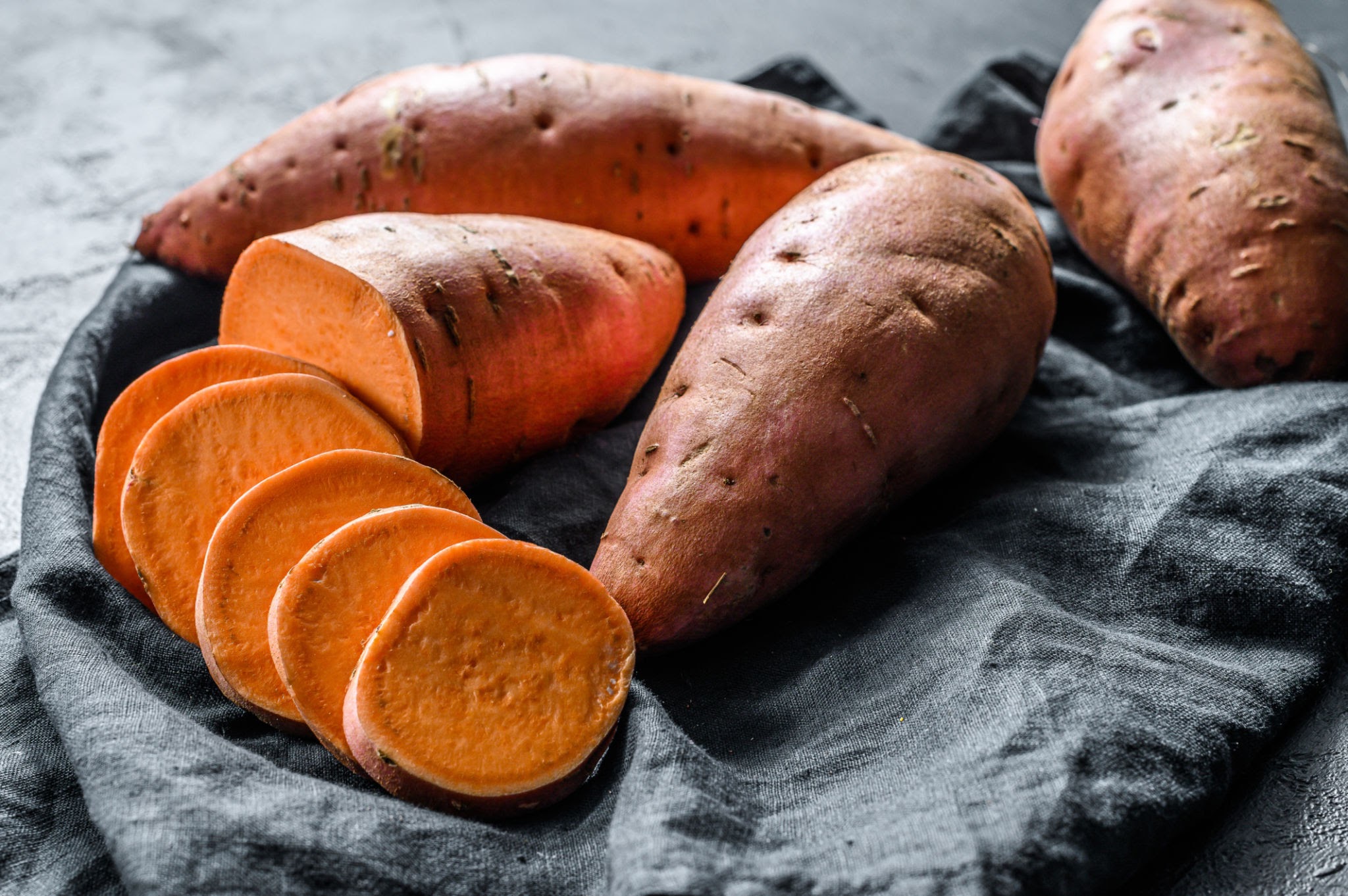
Sweet potatoes are colorful root veggies, mostly orange, but also white, purple, and yellow. They’re sweet and can be used in many recipes. They’re full of good stuff like vitamins and fiber, especially vitamin A, which is great for your eyes and health. They come from Central and South America and have been around for a very long time. People all over the world eat them because they’re healthy and tasty.
40. Butternut Squash
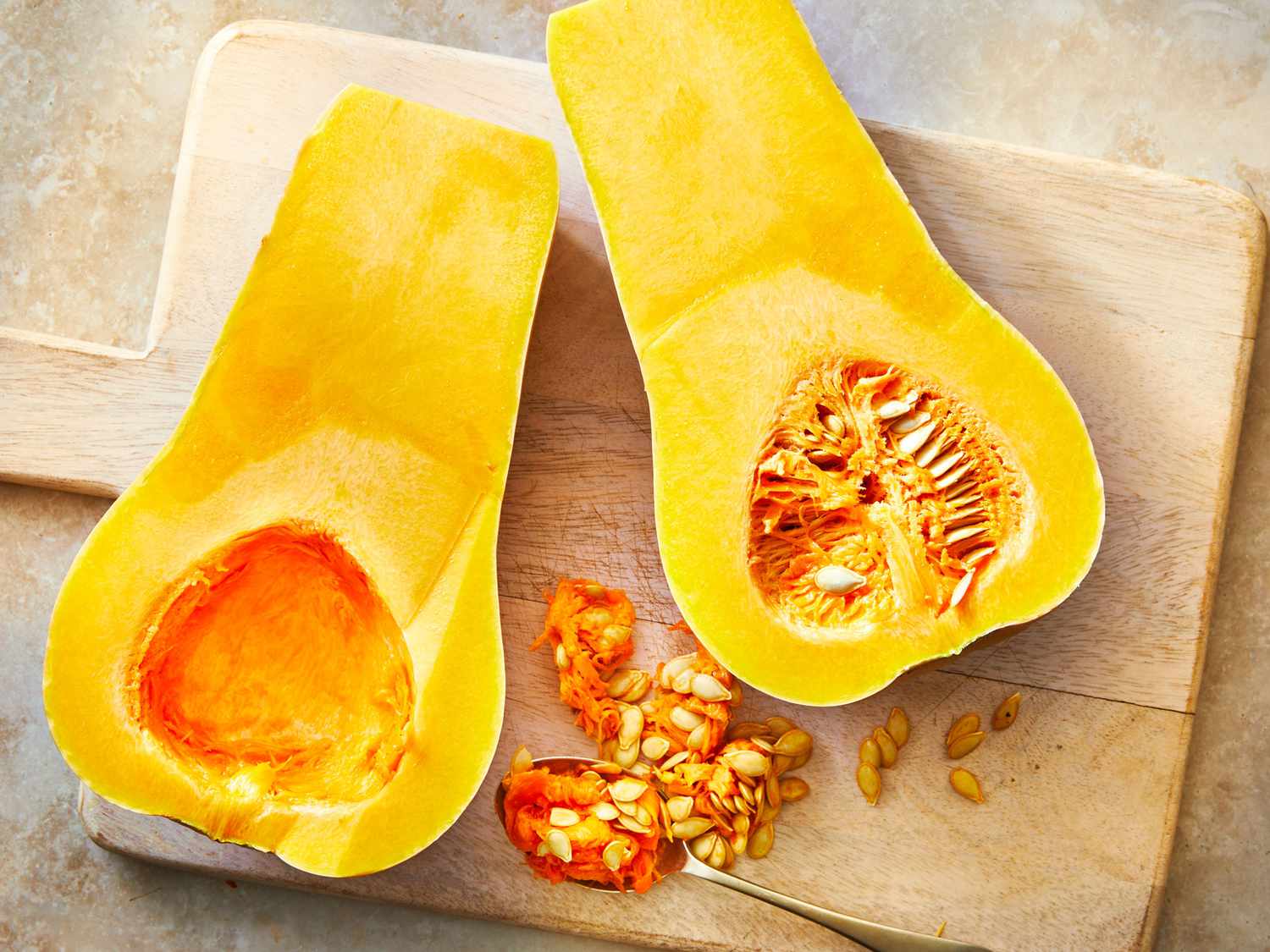
Butternut squash is a type of winter squash with a sweet, nutty taste similar to a pumpkin. It has a tan-yellow skin and orange fleshy pulp with a compartment of seeds in the bottom. When cooked, butternut squash becomes even sweeter and can be used in a variety of dishes, from soups and stews to roasts and pies. It’s rich in vitamins A and C, potassium, and fiber, making it a nutritious addition to meals.
41. Autumn Leaves
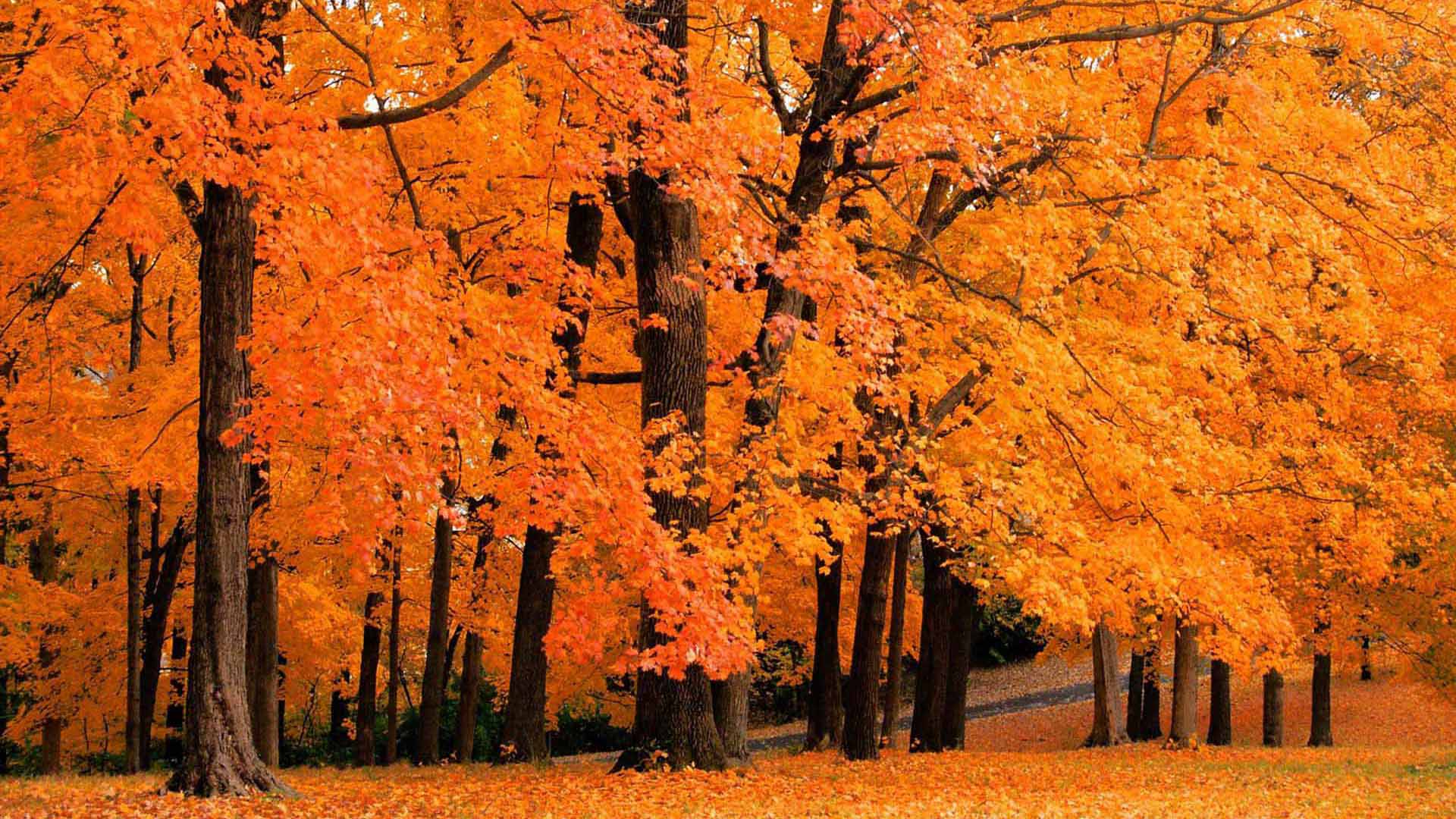
Autumn leaves turn from green to bright yellow, orange, red, and brown in the fall. This happens because trees stop making their green color as they get ready for winter, showing other colors that were there all along. The exact color change depends on the weather and where the tree is. A cool fact is that these pretty colors help trees save energy for the cold months.
42. Yellow Tail Coris
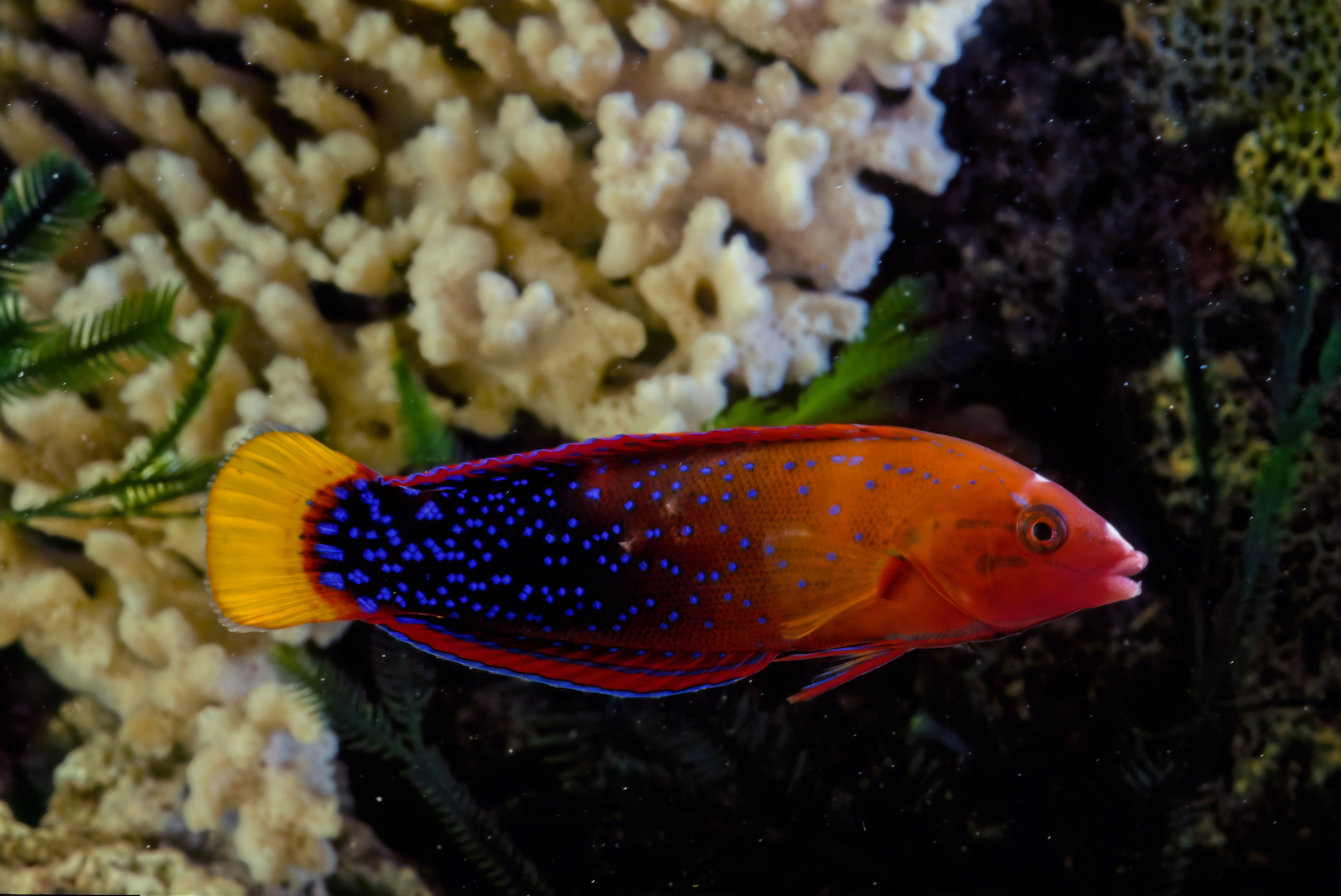
The Yellow Tail Coris is a colorful fish found in the tropical waters of the Indo-Pacific region. Its body is a vibrant mix of blue, green, and red, with a distinctive yellow tail, which is how it gets its name. Young Yellow Tail Coris have a different appearance, displaying orange bodies with white and black spots, which change as they mature. This fish is known for its playful behavior and is a popular choice among aquarium enthusiasts.
43. Cave Salamander
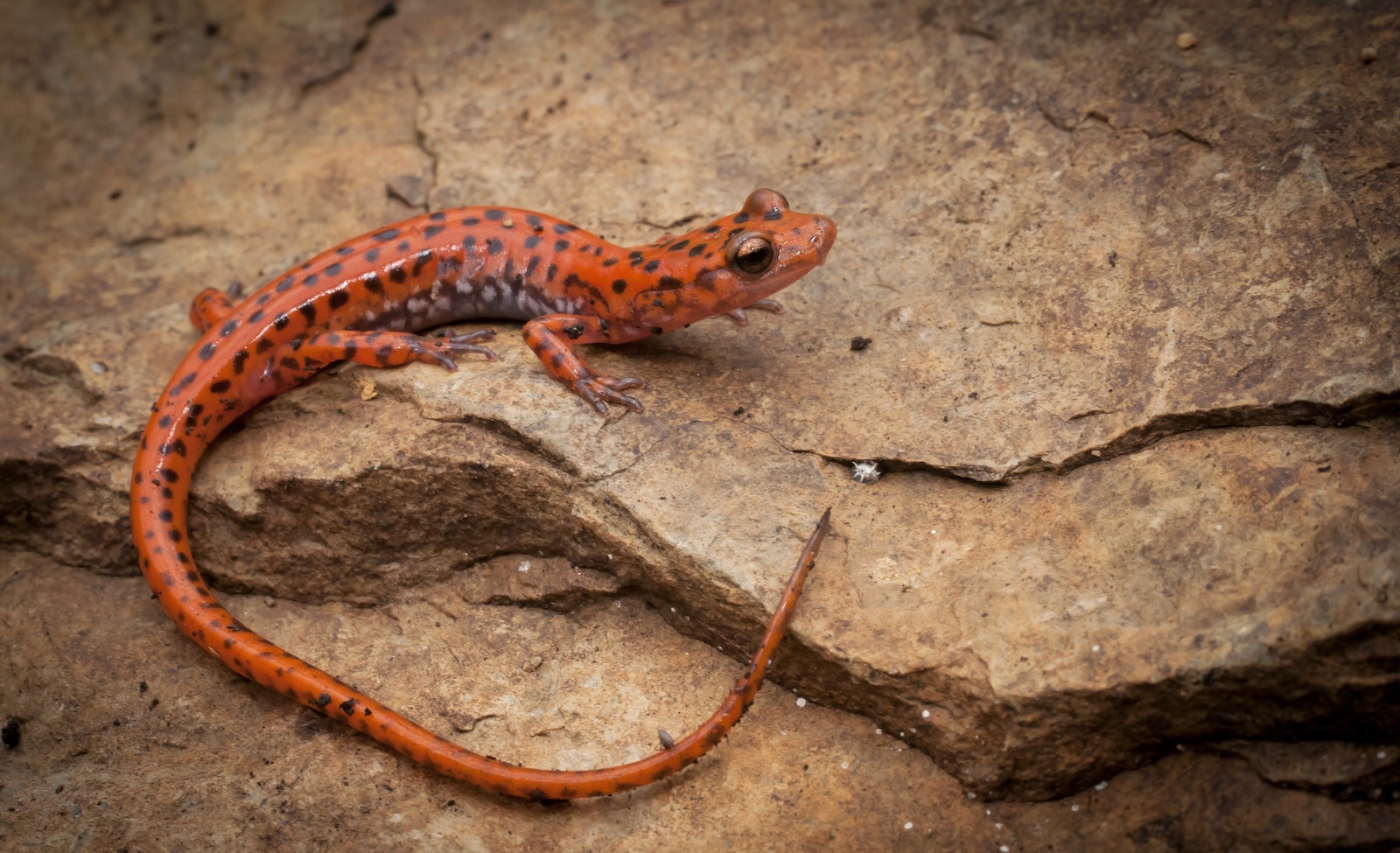
The Cave Salamander, known for its striking orange or yellow body and black spots, is a species found in moist, dark habitats like caves and rocky areas near streams. These salamanders are excellent climbers and often live in environments with high humidity and stable temperatures, which are crucial for their survival. They feed on small invertebrates, using their keen sense of smell to locate prey in the dark.
44. Orange Lantana
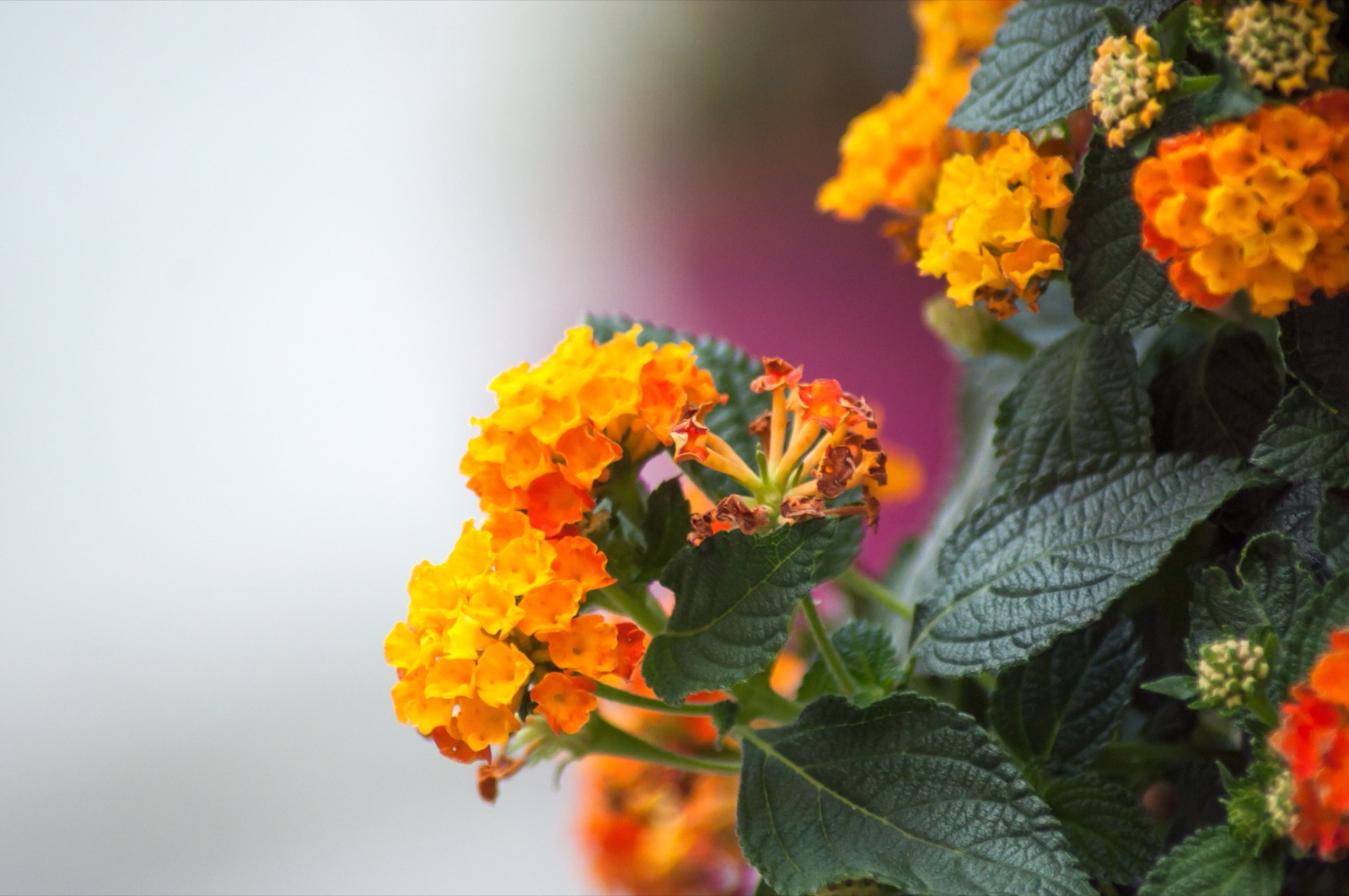
Orange Lantana is a vibrant, flowering plant known for its clusters of small, bright orange flowers. It thrives in warm climates and is popular in gardens and landscapes for its ability to attract butterflies and bees, thanks to its nectar-rich blooms. Lantana is drought-resistant, making it an excellent choice for low-maintenance gardens.
45. Colorado Soldier Beetle
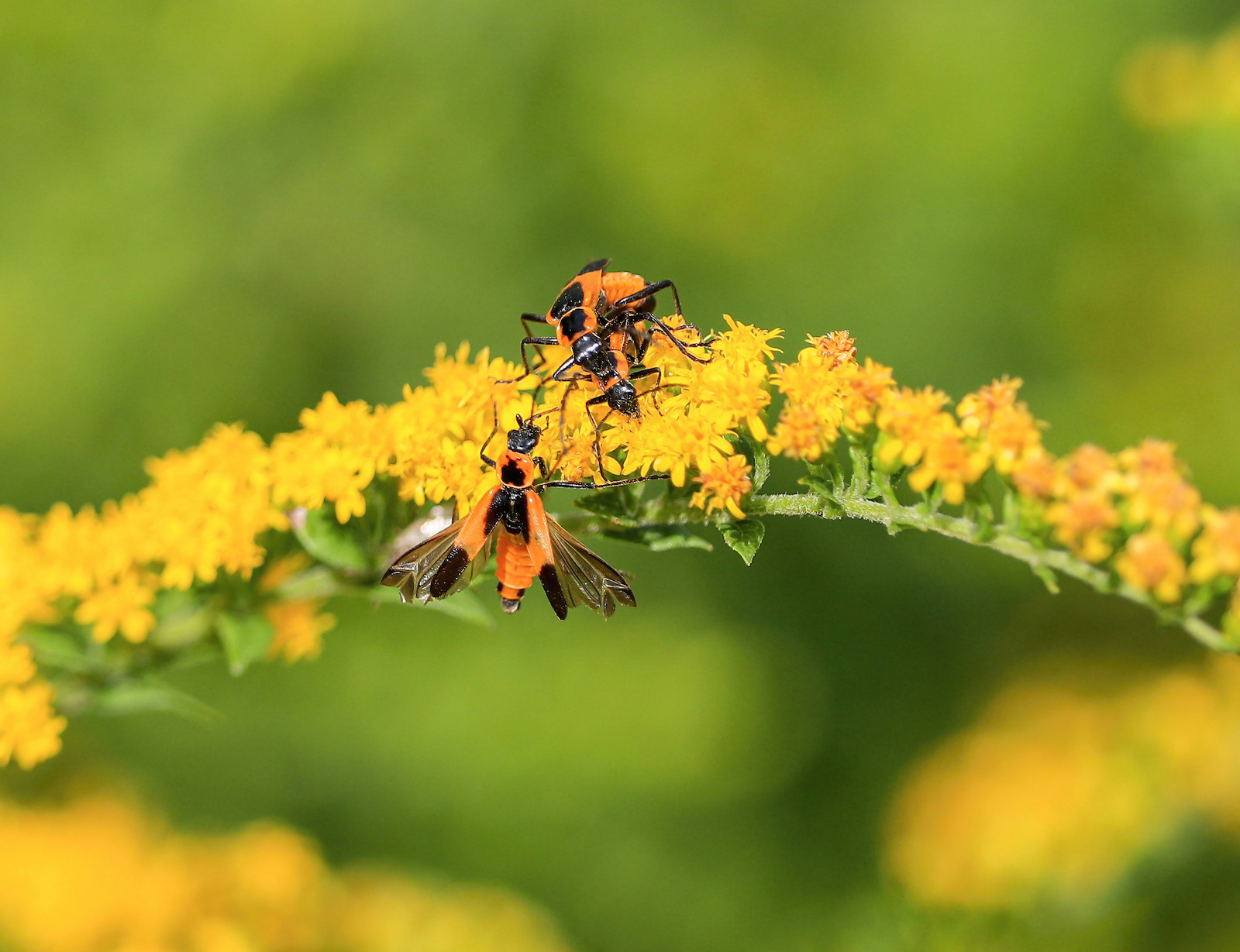
The Colorado Soldier Beetle, often found in North America, particularly in Colorado and surrounding areas, is a beneficial insect to gardens and crops. These beetles are recognizable by their soft, elongated bodies that are typically yellow to orange in color with black markings. They are active during the summer months and are commonly seen on flowers, where they feed on pollen and nectar, but also prey on harmful insects, helping to naturally control pest populations.
46. Flame Robin
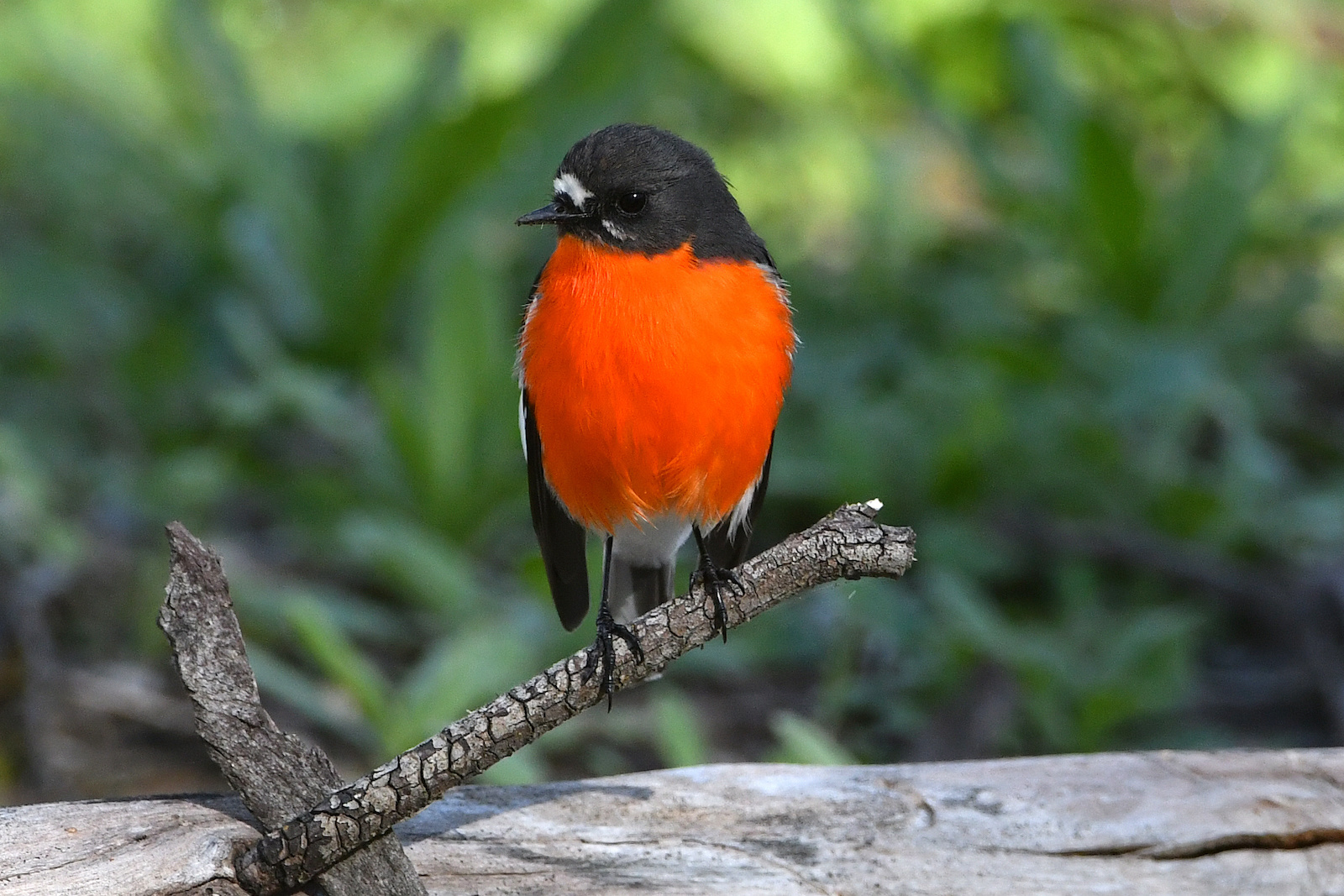
The Flame Robin is a small Australian bird with bright orange-red males and gray females. They live in cool woods and eat insects. In winter, they move to warmer places, where people can easily see them. Their colorful look and movement make them interesting to watch.
47. Red Panda
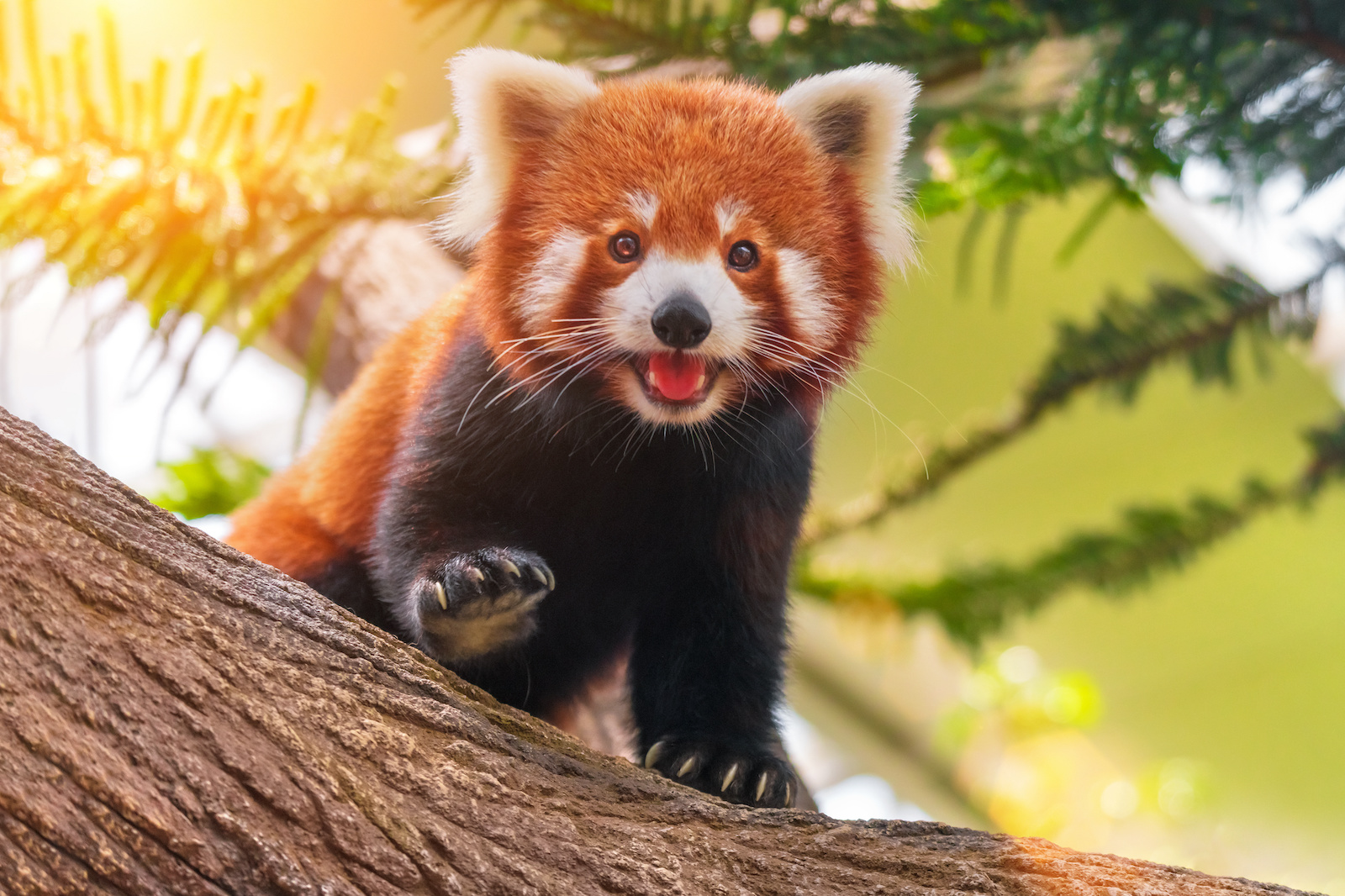
The Red Panda is a small mammal native to the eastern Himalayas and southwestern China. It’s known for its reddish-brown fur, bushy tail with rings, and a face that resembles a raccoon’s. Red Pandas are mainly solitary and spend most of their time in trees, feeding primarily on bamboo, but they also eat eggs, birds, and insects.
48. Red Squirrel
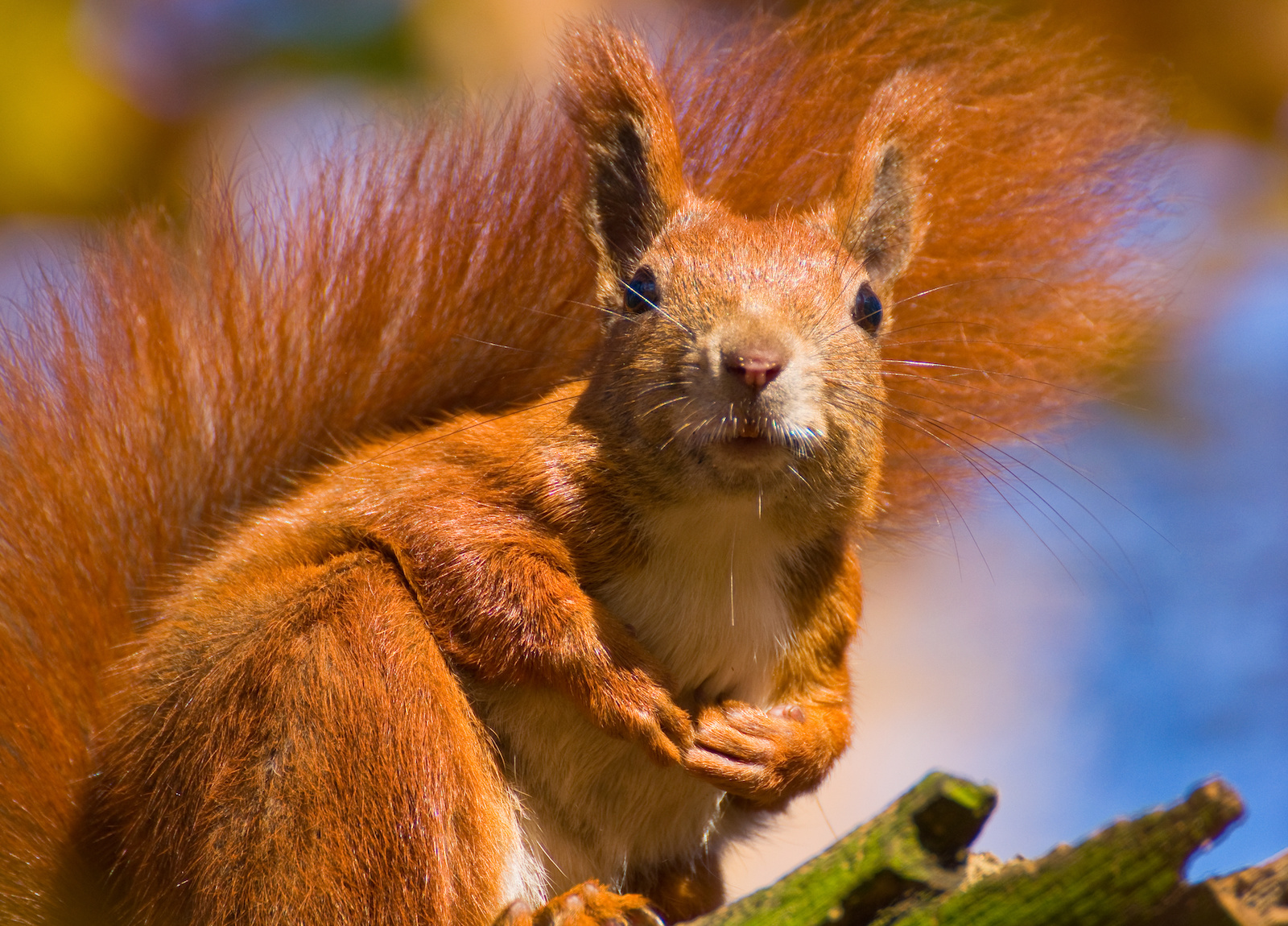
The Red Squirrel, native to Europe and parts of Asia, is a small mammal known for its distinctive reddish fur, tufted ears, and bushy tail. These squirrels prefer woodland habitats where they can find their main food sources: seeds, nuts, fruits, and sometimes fungi. Red Squirrels are more solitary compared to other squirrel species and are highly territorial, often seen energetically defending their territory from intruders
49. Rufous Humming Bird
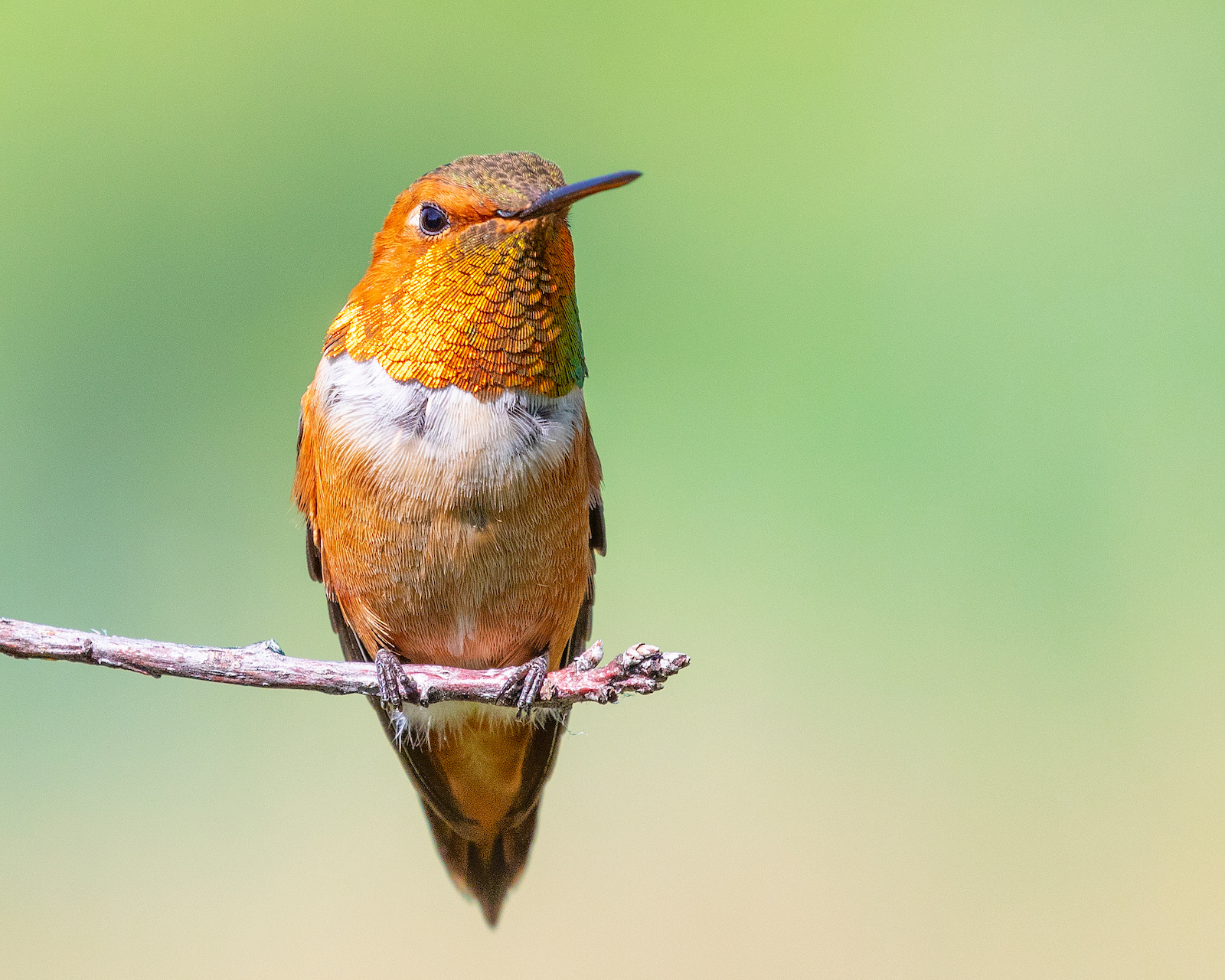
The Rufous Hummingbird is a tiny bird with bright reddish-orange colors. Males have a shiny orange throat, while females are more green and white with some orange spots. They fly long distances, from Alaska to Mexico, which is impressive for their size. They’re also very territorial and can chase away bigger birds. They’re amazing flyers, able to hover, fly backward, and even upside down, making them great at getting nectar from flowers.
50. Goldfish
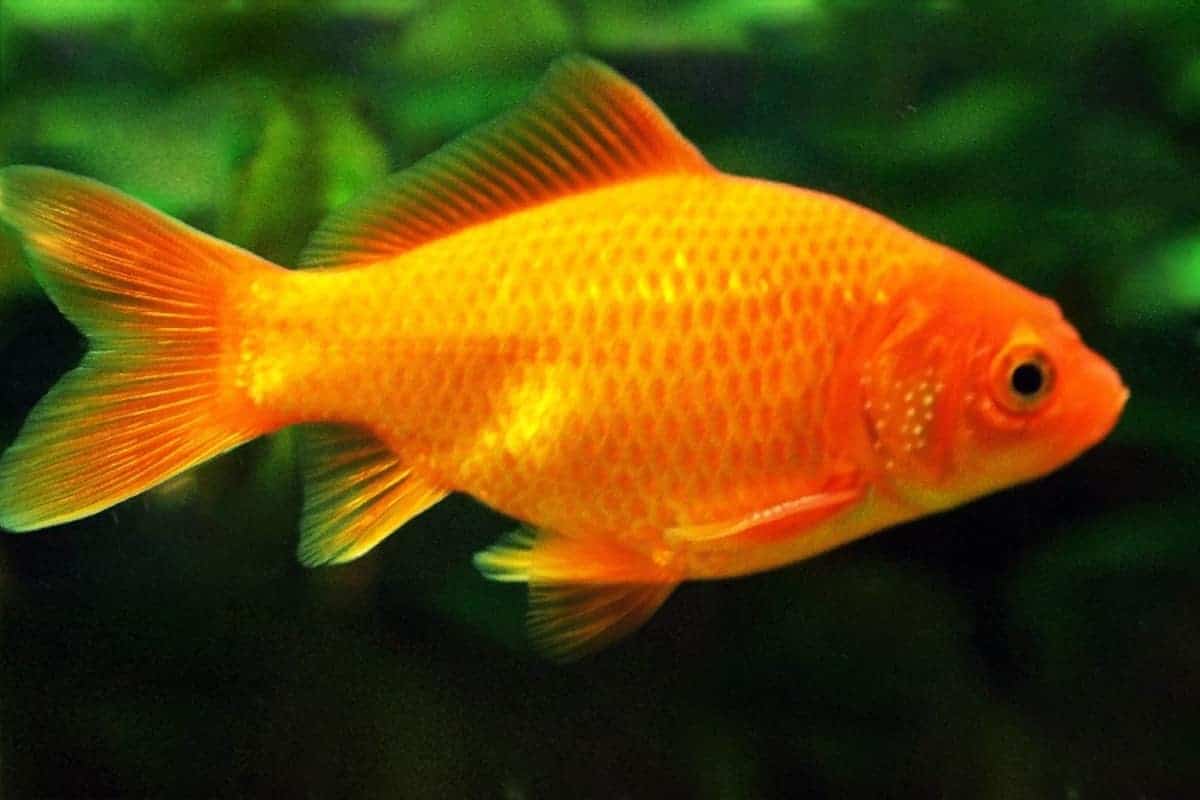
Goldfish are popular freshwater fish known for their bright orange color, though they can also come in other colors like red, black, and white. They were first domesticated in China over a thousand years ago and are descendants of the Prussian carp. Goldfish can vary greatly in size and shape, depending on the breed, with some fancy varieties having unique features like bubble eyes or fancy tails.
Wrapping up our adventure with 50 orange things in nature, it’s amazing to see how this bright color lights up the world around us. From tiny bugs to big, beautiful sunsets, orange is everywhere, making things fun and interesting. Next time you spot something orange outside, think about the cool stories and secrets behind it. Orange isn’t just a color; it’s a part of nature that adds a splash of excitement to our day.







